History of Russian roads. From the history of road construction
Introduction. 3
1. Roads to Kievan Rus. 4
2. Territorial growth of Russia and development of roads. 6
3. Large road construction projects of the 18th–19th centuries. 7
4. Russian roads in the twentieth century. nine
Conclusion. fourteen
List of references.. 15
Introduction
Anyone who thinks that roads appeared on our planet recently is very mistaken. There have always been roads, even when there was no man himself on Earth. Animals, for example, always ran to the watering hole along the relatively trampled by them safe roads without risking falling into a deep hole or drowning in a swamp. But a man came. He was no longer satisfied with the spontaneously formed and narrow paths passing through forests and mountains. A person had to move not only on his own, but also to come up with something so that the carts he made would not get stuck in the mud during the autumn thaw. And the man began to build roads. At first it was just narrow and long strips paved with cobblestones or pieces of sandstone. But, over the centuries, roads have been improved, and today they are multi-lane structures with their own infrastructure, interchanges, bridges across water barriers, many kilometers of tunnels pierced in the mountains and lying under water. All of these are roads.
The history of road construction itself is like a long and winding road. In this paper, we will consider the history of one of its sections - the history of Russian roads.
Roads are one of the most important elements state infrastructure. The degree of development of the road network directly affects the economic prosperity and defense capability of the country.
Unfortunately, throughout history, Russian roads have left much to be desired. To some extent, this is due to the peculiarity of the natural and geographical conditions in which Russian civilization was formed. Due to the harsh climate, the presence a large number various kinds of obstacles - forests, wetlands, the construction of roads in Russia has always been associated with significant difficulties. Unlike the countries of the West, which arose on the site of one of the greatest ancient civilizations - ancient rome and inherited from it, in addition to Roman law and architecture, an excellent road system, Russian civilization, being peripheral, arose on a rich but undeveloped territory, which also explains the peculiarities of the development of its transport system.
By the end of the ninth century, the education ancient Russian state. In view of the fact that most of the territory of Russia was occupied by impenetrable forests, rivers played the role of roads; all Russian cities and most of the villages were located along the banks of the rivers. In the summer they swam along the rivers, in the winter they rode sledges. According to the testimony of the Byzantine emperor of the 10th century, Constantine Porphyrogenitus, even the collection of tribute by the Kyiv prince (poludie) was carried out in winter time. In November, the prince with a retinue left Kyiv and traveled around the subject territories, returning in April. Apparently, in the rest of the year, many Russian territories were simply inaccessible. Overland communication was also hampered by gangs of robbers who hunted on forest roads. Kyiv prince Vladimir Monomakh, who ruled in early XII century, in his “Instruction”, addressed to his children, as one of his exploits, he recalled the journey “through the Vyatichi” - through the land of the Vyatichi. The first mention of road works dates back to 1015. According to The Tale of Bygone Years, Kyiv prince Vladimir, going on a campaign against his son Yaroslav, who reigned in Novgorod, ordered his servants: "Pull the paths and bridge." In the 11th century, the authorities tried to legislate the status of "bridgemen" - masters in the construction and repair of bridges and pavements. The first written set of laws in Russia, Russkaya Pravda, contains a Lesson for Bridgemen, which, among other things, set tariffs for various Men at work.
The absence of roads sometimes turned out to be a boon for the population of the Russian principalities. So, in 1238, Batu Khan, who ruined the Ryazan and Vladimir-Suzdal principalities, could not reach Novgorod due to the spring thaw, and was forced to turn south. Tatar-Mongol invasion played a dual role in the development road system Russian lands. On the one hand, as a result of Batu’s campaigns, the economy of the Russian principalities was thoroughly undermined, dozens of cities were destroyed, a significant part of the population died or was taken prisoner, which ultimately led to a reduction in trade and desolation of roads. At the same time, having subjugated North-Eastern Russia and made it an ulus (part) of the Golden Horde, the Tatars introduced their postal system in the Russian lands, borrowed from China, which in fact was a revolution in the development of the road network. Horde mail stations began to be located along the roads, called pits (from the Mongolian "dzyam" - "road"). The owners of the stations were called coachmen (from the Turkic "yamdzhi" - "messenger"). The maintenance of the pits fell on the local population, who also performed the underwater duty, i.e. was obliged to provide their horses and carts to the Horde ambassadors or messengers. Horde officials traveling along Russian roads were issued a special pass - a paysatz.
2. Territorial growth of Russia and development of roads
XIV-XV centuries in the history of Russia - the time of the formation of a single centralized state. The Moscow Principality unites the lands of North-Eastern Russia around itself; at the end of the 15th century, a new name for a single state appeared - “Russia”. The growth of the territory of Russia continued in the XVI-XVII centuries. By the end of the 16th century, the Volga, Urals, Western Siberia. In connection with the growth of the territory, roads in Russia have acquired special importance; on them, messengers from all the outskirts of the state delivered to Moscow news of the invasions of foreign troops, rebellions and crop failures. The central government showed particular concern for the development of the Yamskaya post, inherited from the Tatars. In the 16th century, yamskaya chase was established in the Ryazan and Smolensk lands. By the time of the reign of Ivan III, the first surviving travel document issued to Yuri Grek and Kulka Oksentiev, who was sent "to the Germans", dates back. In it, the sovereign ordered at the entire distance from Moscow to Tver, from Tver to Torzhok and from Torzhok to Novgorod to give ambassadors "two carts each to the carts from the pit to the doyam according to this letter of mine." In another letter of Ivan III - dated June 6, 1481 - the position of an official responsible for the condition of postal stations and roads - a Yamsk bailiff, was first mentioned. The pits were located at a distance of 30-50 miles. Coachmen were obliged to provide horses for all travelers with a princely letter, for their service they were exempted from tax - the sovereign tax and all duties - and, moreover, received maintenance in money and oats. Local peasants had to keep the roads in good condition under the supervision of coachmen. At the choice of the headman, two people from the plow (a territorial unit of tax payment) went out to clear roads, repair bridges and renew the gates through the swampy sections of the road. Under Ivan the Terrible, in 1555, a single body for managing the road business was created - the Yamskaya hut. Already at the beginning of the 16th century, the first descriptions of large Russian roads- "Russian road builder", "Perm" and "Yugorsky" road builders. By the end of the 16th century, “exiled books” appeared with descriptions of small regional roads.
3. Large road construction projects of the 18th–19th centuries.
In the Petrine era, road supervision passed to the Chamber Collegium, the central tax department, which also collected road tolls. In the localities, in the provinces and provinces, the roads were entrusted to zemstvo commissars, who were elected by local landowners and subordinate to the Chamber Collegium. The largest road construction project of the time of Peter the Great was undoubtedly the construction of a "prospective" - straight-line road from St. Petersburg to Moscow. Work on the construction of the "prospective" road continued until 1746. The road work was in charge of the Office of the State Road Construction, headed by General V.V. Fermor.
Catherine II, already at the beginning of her reign, decided to give the road business the character of an important state task. She strengthened the status of the Chancellery from the construction of state roads as central office. The decree of February 18, 1764 ordered her to "make efforts to bring all state roads into the best condition." In 1775, a provincial reform was carried out. Most of the central departments, including the Office for the Construction of State Roads, are gradually being liquidated, their powers are being transferred to provinces and counties. The authorities of the province were supposed to deal only with the completion of state roads, and their maintenance was transferred to the county authorities - the zemstvo police officer and the lower zemstvo court. They were instructed to “apply vigilant watch and care so that roads, bridges and crossings ... are kept in such good condition so that there is no stopping or danger for the passers-by”, so that “no one dug up bridges and roads, blocked or shifted from one places to another ... and so that everywhere on roads and bridges there is cleanliness, and dead cattle and carrion, from which a harmful spirit emanates ... not lying anywhere.
During the XVIII-XIX centuries, the road departments were subjected to constant reorganization. In 1809, Alexander I approved the Institution for the management of water and land communications. According to him, the Expedition of Water Communications and the Expedition for the Construction of Roads in the State merged into the Directorate of Water and Land Communications (since 1810 - the Main Directorate of Communications - GUPS), which was entrusted with all communications of national importance. The administration was located in Tver, headed by chief director and advice. Under the chief director there was an expedition, which included three categories (departments), of which the second was engaged in overland roads. The empire was divided into 10 districts of communications. At the head of the district was the district chief, who was subordinate to the managing directors who supervised the most important parts of the lines of communication and were especially busy drafting projects and estimates. The security of the roads has also been improved. It was entrusted to special district police teams, which were subordinate to the district chiefs. The teams consisted of the chief of police, caretakers, non-commissioned officers and privates. Their task was not to fight criminality, but to ensure that "roads, bridges, ditches, etc. were not damaged, that the side channels were not blocked, that the roads themselves were not narrowed by buildings, wattle fences or plowed."
In the second half of the 19th century, the importance of unpaved and highway roads in Russia, in connection with the development railway transport decreased significantly. If in 1840–1860 up to 266 miles of highways were put into operation annually, then in the 60s it was 2.5 times less. So, in 1860-1867, an average of 105 miles per year was built. In the years 1867-1876, the construction of roads was practically not carried out, and from 1876 to 1883 no more than 15 versts of the highway were put into operation annually. In addition, the quality and condition of these roads left much to be desired. The situation changed somewhat after the Zemstvo reform in 1864. The roads were transferred to the jurisdiction of the zemstvos, which were supposed to monitor their serviceability. Lacking the large funds necessary for carrying out large-scale road works, the zemstvos launched a vigorous activity to improve roads. Along the roads begin to form green spaces, road equipment is purchased abroad.
4. Russian roads in the twentieth century
The rapid development of the country's industry at the turn of the 19th-20th centuries, as well as the appearance of the first cars on Russian roads, contributed to a change in the attitude of the government to the state of the road network. Before the First World War, motor races were organized almost every year, local authorities tried to improve the roads before these events. Many dignitaries, generals, senior officials contributed to the allocation of financial and material resources for the construction of roads, as well as the solution of various organizational problems. The measures taken at the beginning of the 20th century by the government, zemstvos, commercial, industrial and financial circles made it possible to slightly increase the length of the road network, improve their condition, and introduce some technological innovations.
The revolutions of 1917 and the civil war of 1918-1920 had a huge impact on the development of the country's road network. During the period civil war road construction was carried out by Voenstroy, Frontstroy, as well as the Highway Administration (Upshoss) of the NKPS. After the end of the civil war, countless reorganizations of these departments began. At the beginning of 1922, Upshoss and the Central Automobile Section of the Supreme Economic Council were merged and included in the Central Administration of Local Transport (TSUMT) as part of the NKPS. However, already in August 1922, by a joint decree of the All-Russian Central Executive Committee and the Council of People's Commissars of the RSFSR, the country's road infrastructure was divided between two departments - the TSUMT NKPS and the Main Directorate of Communal Services (GUKH) of the NKVD. The roads of national importance were under the jurisdiction of TSUMT, the direct concern for the condition of the roads was entrusted to the district departments of local transport (OMES) subordinate to TSUMT. Departments of communal services GUKH NKVD carried out the management of local roads.
The reforms of the road management authorities continued in subsequent years. At the same time, the state of the road remained in a deplorable state. The problem of financing road construction was particularly acute. At the same time, the country that carried out industrialization needed to create a developed transport system as soon as possible. From the position Soviet leadership tried to get out by transferring control of the roads of the allied significance to the NKVD. In 1936, as part of the NKVD of the USSR, the Main Directorate of Highways (Gushosdor) was formed, which was in charge of roads of allied significance. As early as 1925, a natural road service was introduced in the country, according to which, local residents were obliged to work for free certain number days a year for road construction. In 1936, a government decree was issued, which recognized the expediency of creating permanent local brigades, whose work was counted in overall plan labor participation of collective farmers. However, the main labor force in the construction of roads were prisoners. As a result of the second five-year plan (1933-1937), the country received more than 230 thousand kilometers of profiled dirt roads. At the same time, the plan for the construction of paved roads turned out to be underfulfilled by 15%.
A large road construction program was planned for the third five-year plan (1938–1942), but the Great Patriotic War. During the war years, a significant part of the road equipment was transferred to the Red Army, many road workers went to the front. During the hostilities, 91,000 kilometers of roads, 90,000 bridges with a total length of 980 kilometers were destroyed, therefore, after the end of the war, the primary task facing the road services was the repair and restoration of roads. However, the fourth five-year plan, adopted in March 1946, poorly took into account the interests of the road industry, which was financed on a residual basis. At that time, two departments were responsible for the construction of roads - Gushosdor of the Ministry of Internal Affairs and the Main Road Administration (Glavdorupr). As part of Gushosdor, in 1945, a Special Road Construction Corps was created, the basis of which was road troops.
In the 1950s, Gushosdor moved into the structure of the newly created Ministry of road transport and highways of the USSR, where it was divided into two main departments - operational (Gushosdor) and construction (Glavdorstroy). All work on the construction of national roads, which was previously carried out by Gushosdor, was transferred to Glavdorstroy. Problems with the financing of the road industry were felt in these years as well. Efforts continued to be made to involve the local population, various enterprises. In 1950, Glavdorupr was simultaneously building 32 roads of republican significance and a number of local roads. The dispersal of resources and the multi-objective nature of tasks, with poor material and staffing, had a negative impact on the results of the work.
http://www.rosavtodor.ru/doc/history/main15.jpg The peak of road construction in the USSR falls on the 60-70s. The allocation of significant funds for road construction begins, road builders receive modern technology. In 1962, the Moscow Ring Road was put into operation, with a length of 109 kilometers. In general, in Russian Federation in 1959–1965, the length of paved roads increased by 81.2 thousand kilometers, 37 thousand kilometers of them had improved pavements. In the same years, the roads Kashira-Voronezh, Voronezh-Saratov, Voronezh-Shakhty, Saratov-Balashov, Vladimir-Ivanovo, Sverdlovsk-Chelyabinsk, and a number of others were built.
Intensive road construction continued in the 1970s and 1980s. As a result, in 1990 the road network common use in the RSFSR was 455.4 thousand kilometers, including 41 thousand kilometers of national roads and 57.6 thousand kilometers of republican significance.
However, in the early 1990s, about 167 district centers (out of 1837) were still not connected to regional and republican centers by paved roads. The residents of almost 1,700 central estates (out of 23,000) and about 250,000 medium and small settlements and farms did not have access to the main highway network on paved roads. Due to the difficult economic situation in the country, there was a big shortage of financial resources. At the same time, the transition to a market economy required a revision and fundamental change in the essence of many socio-economic categories, such as the form of ownership, planning, management of industrial relations, the psychology of the individual and society, and many other components of human existence.
Despite all the difficulties, for 1997-1999. there have been real shifts both in the development of the road network and in the efficiency of the functioning of the road sector. Over the past 12-13 years, Russia has seen an accelerated (up to 10% per year) growth in the car park, traffic intensity and road transport.
As of January 1, 2002, the length of motor roads in the Russian Federation was 904.7 thousand km, including 759.3 thousand km of paved roads and 145.4 thousand km of unpaved roads. The length of public roads is 588.7 thousand km, including 537.3 thousand km of paved roads (91%), unpaved roads - 51.4 thousand km. At the same time, the length of federal public roads is 46.6 thousand km, including 46.3 thousand km (99.3%) with a hard surface, and 542.1 thousand km of territorial public roads, in including hard-surfaced 491 thousand km (90%).
Yes, our roads are still inferior to European ones, and in general we do not have enough of them. Experts have calculated that in order to fully meet the socio-economic needs of the country, the minimum length of the Russian road network should be at least 1.5 million km, that is, increase one and a half times compared to what we already have.
Of course, this will require a significant increase in the volume of road construction. Here it is appropriate to quote the statement of Sergei Frank, Minister of Transport of the Russian Federation. He announced that the national program for the development of the road network envisages an increase in the total length of Russian roads by 2010 by 80,000 km. This task is supposed to be carried out with the involvement of private investors, who will have the opportunity to create a network of toll roads in our country.
However, those who are frightened by the very phrase "toll roads" can be reassured. Commercial highways will only be an alternative to the conventional road network. The appearance of toll roads will not change the quality of functioning of existing roads, and first of all, federal highways. The driver himself will decide whether to drive straight as an arrow and ideally flat road, for which you will have to pay, or use the free one, the quality of which has become familiar to us. This practice has long been accepted in many countries of the world. And, in my opinion, this is quite fair, as long as there are no excesses.
The road builders do not stop there and direct their main efforts to expanding not only the domestic, but also the international space. This is reflected in the federal target program “Modernization of the transport system of Russia (2002-2010)”, which is being implemented today, namely in the part “Roads” (the program “Roads of Russia in the 21st century”), which is based on the principle of developing international and Russian transport corridors : Baltic-Center-South, Western border-Center-Ural, North-South, North-West-Ural, Western Siberia-Far East and others. They play a central role in solving transport problems related to the expansion of international, interstate and interregional transport, economic, political, and cultural ties.
Currently, with the support of the Government of the Russian Federation, active work is underway on a long-term program for the development of the national network of Russian highways until 2025. New tasks are set, the main directions are determined, priorities are identified with one goal - to make Russia a country of developed motorization and excellent roads. Let's hope that this the most difficult task will be carried out not only in the central part, but also in the northern part of Russia, on Far East and in Siberia.
1. Roads of Moscow [Electronic resource]: http://about-roads.ru/auto/moscow-roads/
2.Roads of Russia: trouble or victory [Electronic resource]: http://about-roads.ru/auto/autoroad-rus/2/
3.Roads of Russia: history and modernity [Electronic resource]: http://www.rosavtodor.ru/doc/history/hystory1.htm
4. History of roads in Russia and the world [Electronic resource]: http://about-roads.ru/auto/road-history/
September 21 marks the 260th anniversary of the birth of Scottish engineer John Loudon McAdam. Exactly 200 years ago, he wrote "Notes on modern system road construction. Surprisingly, the basic principles are still relevant today.
And the book, published in 1816, said that the foundation of the road should be laid out from large stones, and several layers of gravel crumbs, filled with tar, were applied on top of them. For adhesion of the layers to each other, they should be compacted with a roller, and the size of the gravel crumb should decrease from the lower layer to the upper one. The roadbed must be raised above ground level, and the profile of the roadbed must be made convex - in order to rainwater ran down the curb.
In fact, they tried to develop and apply such methods even before McAdam, but he was the first who brought the entire body of knowledge to a coherent theory and gave it a powerful practical impetus. In 1828, crushed stone rollers were introduced in Great Britain (steam rollers would appear much later, in 1859) - the year before, McAdam had been appointed chief inspector of roads in Great Britain. Subsequently, he also became the chief engineer of Great Britain, his theory quickly became universally recognized in all developed countries, and then the start of the automobile era arrived in time. In honor of the anniversary of the publication of a book so significant for modern motorists, we decided to collect in one material Interesting Facts about how roads are now being built in different countries of the world. So what do we see 200 years later?
USA
AT North America all roads are divided into groups according to their importance, and we are especially interested in the two highest ones - Interstate Highways (indicated by the index I) and US Highways (US), the so-called highways (the fastest of them are also called freeways), in our way. All highways in the USA are made of concrete, and even if there is an asphalt coating, it is temporary - in the States, “concrete” is covered with asphalt in order to delay the overhaul.
Such a trick is used for a reason - the overhaul of a concrete highway is identical to the construction of a new one, but with the addition of work to dismantle the old highway. Concrete is difficult to repair and difficult to lay – while an asphalt pavement is ready for use after 8 hours, concrete takes 28 days to reach its final strength, and it takes several months of continuous work to open a concrete road. Why such difficulties?
Goes on highways maximum flow vehicles and cargo, and concrete is strong, durable and resistant to high loads arising from the overweight of trucks. The guaranteed service life of a concrete highway is 25 years, but in practice they serve for 30-40 years, and the cost of maintaining the highway is minimized. Until now, there are sites put into operation in the 1960s and are in excellent condition.
During the construction process, a meter of soil is selected under the future route, a pillow of gravel, sand and clay is laid in layers and rammed into the resulting trench, then it is poured with lime mortar or calcium chloride solution, loosened and rammed again. As a result, the pillow is able to retain a constant percentage of moisture almost forever, which means it does not sag or swell. Further, two layers of asphalt with a total thickness of 5-7 cm are laid on the pillow, but the asphalt in this case is only a flat platform for a layer of concrete, as well as waterproofing, which does not allow water to flow under the concrete sheet through thermal seams that connect the fragments of the sheet to each other. A reinforcing mesh is laid on the asphalt, which the concrete paver pours with a layer of concrete 30 cm from one thermal seam to the other to obtain a monolithic canvas. And then follows almost a month of waiting until the concrete "gets up".

At overhaul the track is not blocked, but temporary understudies are made of asphalt on the sides of the road, or first one side of the track is repaired, and then the second, but strictly observing the rule - throughput should not decrease by more than 30%. Repair zones are fenced off with curbs, marked with signs, cones and constantly updated information boards, and temporary understudies are provided with markings from convex glow-in-the-dark chips. Penalties for non-compliance with traffic rules in repair zones have been doubled, violations are especially severely punished speed limit.
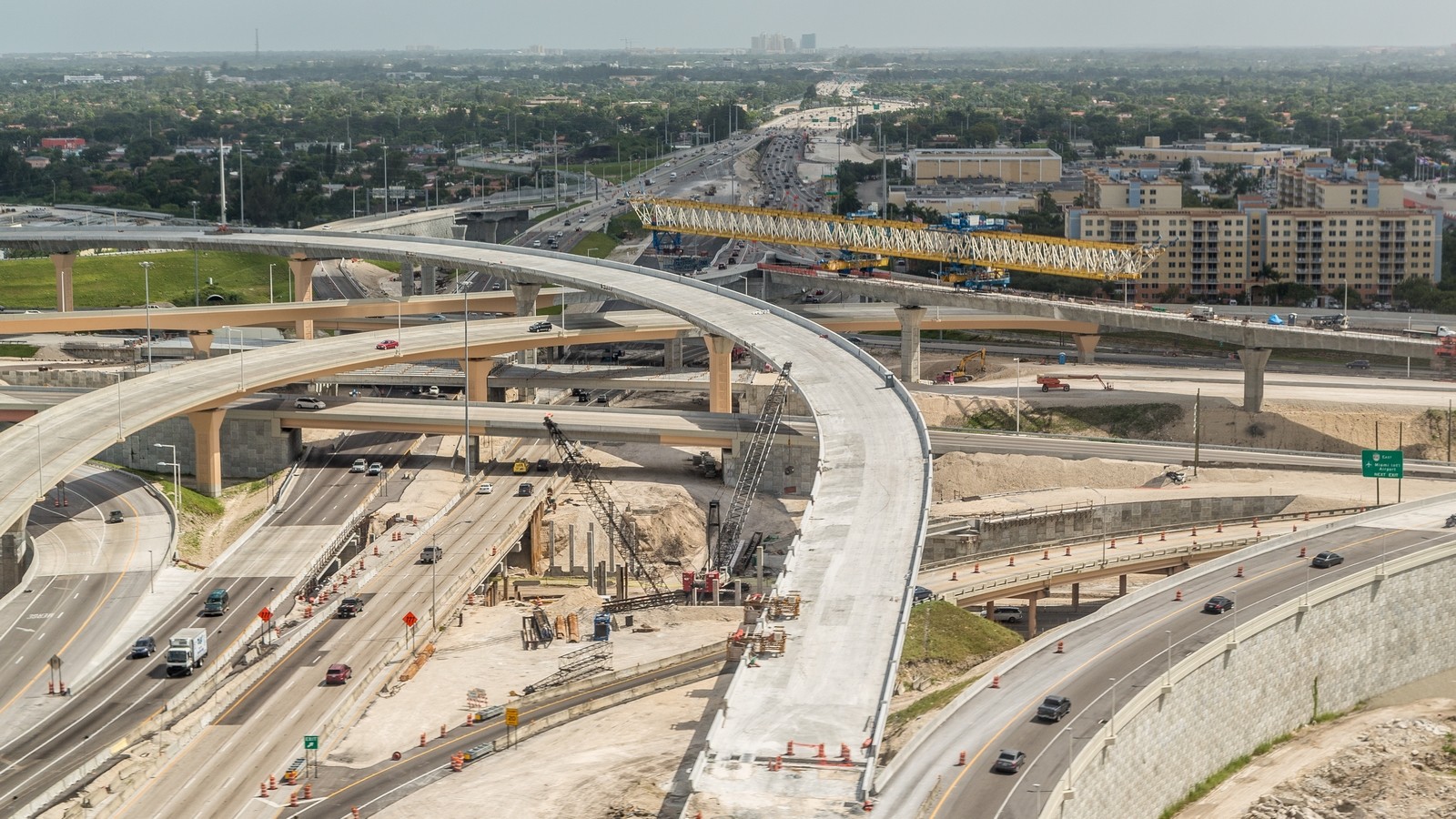
The finished highway includes at least two lanes in each direction, oncoming lanes have a constructive separator and do not fit closer than 10 meters to each other. The right side of the road has a width of at least 6 meters, the left (yes, there is one, but it is forbidden to move onto it) - at least 3 meters. According to safety requirements, the maximum angle of ascents and descents on the highway is 6%, maximum load- 36 tons. There are no roundabouts or loopholes familiar to us, there are understudies for exits to minor roads. Speed limit on highways: minimum 30-40 mph (60-80 km/h), maximum 60-80 mph (100-130 km/h).
Road construction in the USA is profitable state business. The Federal Highway Fund is filled with auto taxes, tolls, private investment, stock sales, and through fuel sales - 2.5 cents goes into the fund for every gallon (4 liters) of gasoline poured into a car tank. This last article alone brings in tens of billions of dollars annually for the foundation.
Roads transport $6 billion more cargo a year than railroads – it’s more profitable that way. The entire transportation infrastructure is valued at over $2 trillion—more than 15% of the value of all US manufacturing assets. Today, more than 300,000 people are employed in the US transportation infrastructure, and every billion dollars invested in it creates 35,000 more jobs, and also avoids more than 1,500 deaths and 50,000 injuries in road accidents. Over the past 40 years, every dollar invested in road construction has saved two in health care, insurance, unemployment supplies, and increased productivity.
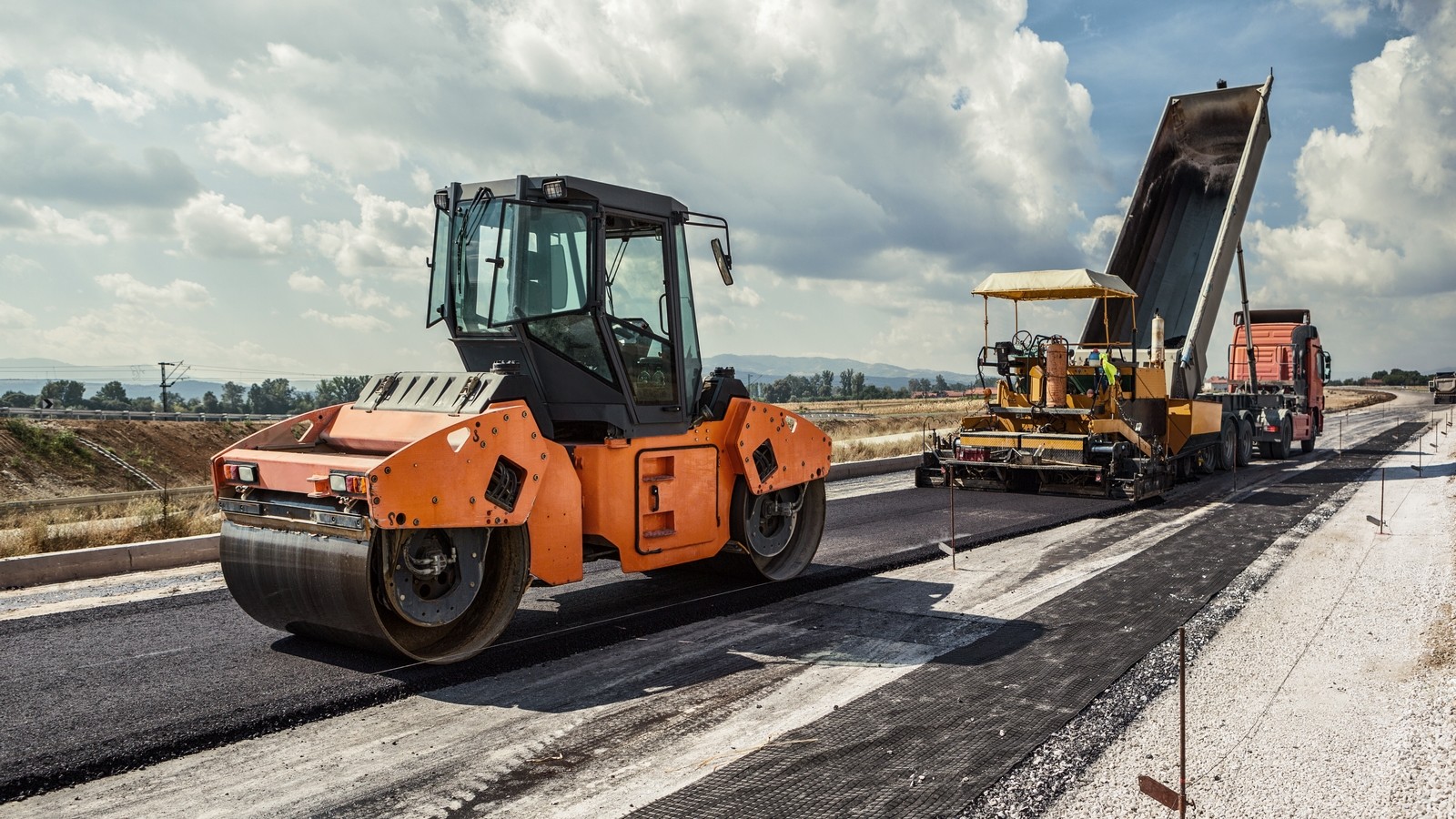
United Kingdom
Gradually, the American experience in the construction of "concrete" migrates to Australia, Asia and Europe. At the beginning of 2016 in Scotland, in the homeland of John McAdam, two mobile concrete plants, performance respectively 90 and 140 cubic meters concrete per hour. These factories beautiful names, Mobile Master-100 Lion and Mobile Master-150 Elephant, and a wheeled chassis that allows them to move from one site to another, constantly supplying the construction site with concrete. This is especially important as Lev and Elephant are building a transport route in the Aberdeen Western Peripheral Route project, which includes 58 kilometers of new highway, 40 kilometers of bypasses, 30 kilometers of ramps, two bridges across the Dee and Don rivers, and about 100 more structures. and objects.
There are about 344,000 kilometers of paved roads in the UK, and at the moment most of them are asphalt. As a more traditional and familiar variant of road construction, let us consider the arrangement of streets in the cities of England. Let it be London, although travelers say that the quality of roads in England is more or less the same everywhere. The pavement of the streets is asphalt, and it is subject to trivial pitting and cosmetic repairs, but not at the moment when the road becomes unusable, but at certain intervals - that is, simply according to plan.

England is one of the rainiest places on Earth, but, oddly enough, it is impossible to even imagine that the asphalt of the city streets here collapsed after the rain. English asphalt is very durable, although in most cases, due to the mildness of the climate, it is not subject to severe frosts. If a hole appears, employees circle it with red chalk and immediately roll it into it new asphalt. There can be many patches in a limited area, but all of them are perfectly (and for a long time) “fitted” into the roadbed.
Another feature of English roads is the transverse slope. It is always there, because it is an easy way to ensure the flow of water. Draining from the canvas, the water reaches the curb, and from there it enters storm drain. Leaves and other debris remain at the curb, from where they are raked by a harvester.
The infrastructure of the streets also deserves attention. As they say, it is unbelievable, but true - bus stops are installed with glass to the roadway so that passengers are protected from dust and splashes. On wide streets, safety islands for pedestrians, enclosed by a fence, are obligatory. At pedestrian crossings, in the exit area to carriageway, a special tile with an anti-slip coating is laid. And themselves pedestrian crossings for motorists are indicated by two orange lights on striped poles - they are clearly visible both day and night.
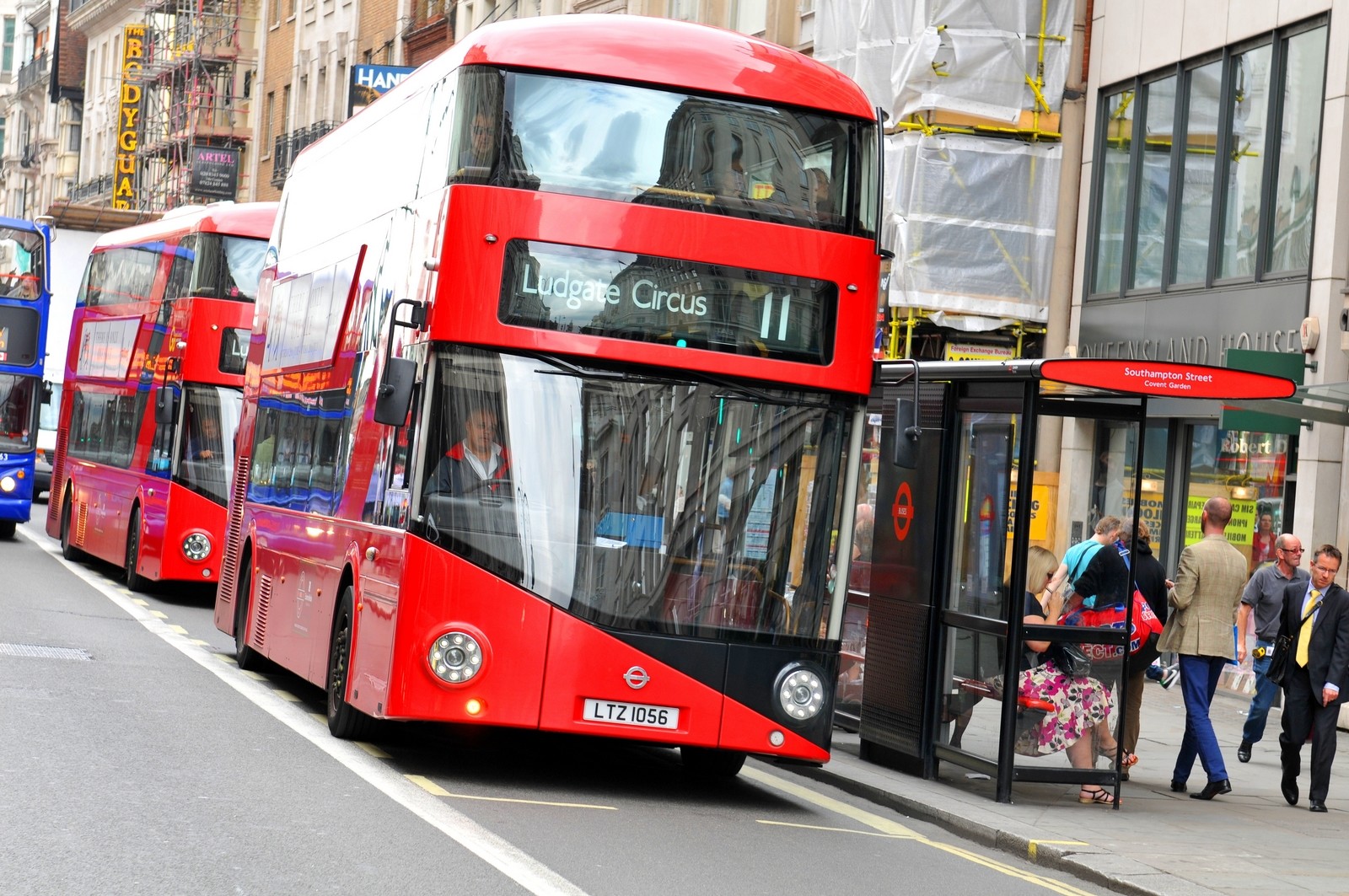
Germany
Fast forward to Germany, famous for its autobahns. The surface of the autobahn can be either asphalt or concrete. But underneath it top layer- a multilayer pressed "pillow", similar in structure to the American one and having a depth of up to two meters.
During the construction of a concrete autobahn, the road is covered with a special film that protects the drying concrete from the sun and precipitation. In the event of rain, when creating an asphalt road, builders simply stop work until the site is completely dry.
All roads have a warranty period of operation, and during this period, road companies eliminate all deviations from the norms at their own expense. patching it’s not in use here - a large section of the road is completely measured at once, because any inaccuracies, errors and further destruction of the canvas are fraught with huge lawsuits.
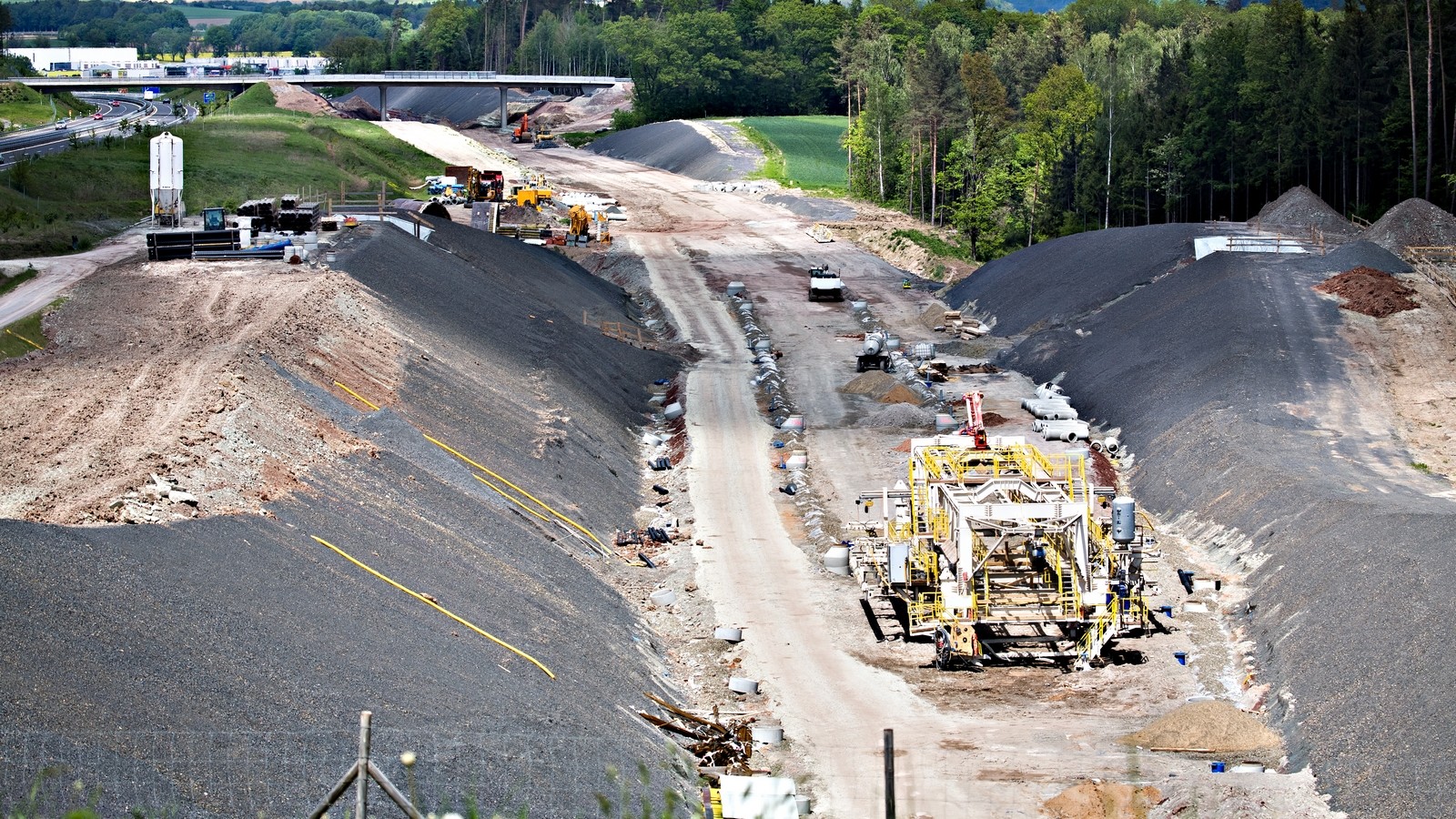
A significant part of modern roads in Germany was built back in the days of the Third Reich and is designed for the movement of columns of heavy military equipment, so these roads still successfully cope with huge traffic. trucks. And the first German autobahn, still in operation, is over 80 years old.
Finland
Finland, along with the UAE, France, the mentioned Germany and a number of other European countries, regularly enters the top ten countries with the best roads despite the harsh climate. Here, too, much attention is paid to the multi-layer rammed cushion, which serves as the basis for the future road.
The Finns have learned how to build roads even on unstable soils - special stabilizing additives are introduced into the substrate of peat or clay. In this Scandinavian country, even dirt roads are maintained in a stable condition.
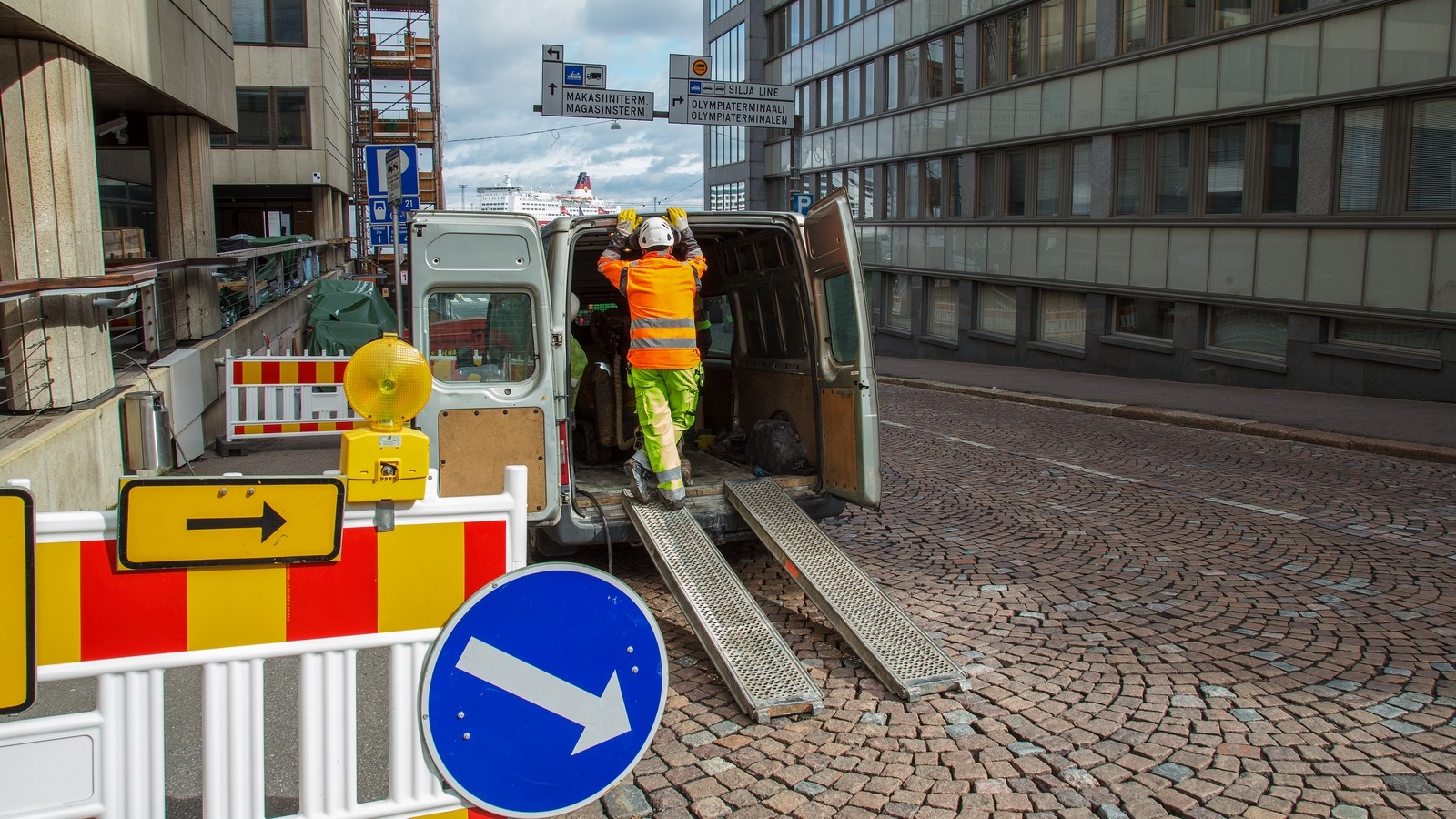
Helsinki was one of the first places in the world to have heated pavements that keep them dry during the winter - the first time this was done in the Finnish capital in 1998. Over the years, the road construction experience of developed countries has come to the conclusion that it is often much more profitable to heat the canvas than to sprinkle with reagents, and to date, heated sidewalks, bus stops, railway platforms and roads, in addition to Finland and other Scandinavian countries, are in the USA , Canada, even in Russia (however, an experimental site with a heated sidewalk near the Moscow City Hall, launched in 2003, can hardly be considered a serious achievement) and, of course, in Japan.
Japan
In Japan, sidewalks and roads are heated in absolutely all cities where snow falls in winter. By the way, the climate of some regions of Japan is also not very mild - for example, in Hokkaido the average annual temperature is only +8 °C. There is also heating on the tracks, so even in heavy snowfalls, there are usually no snowflakes on these roads.
Concrete also serves as the main material for pavement of roads here - due to reasons already known to us: durability, strength, resistance to high loads. The construction technology repeats the American one, but in Japan another plus of concrete is also actively used - it allows you to translate the most complex multi-level interchanges into reality.

Specialists working on the construction different profile, and each bears full responsibility for his site. Takes a lot of time preparatory stage, because on it the plan of the future road is being worked out to the smallest detail. In addition, if the road must pass through private territory, lawyers and the government need to successfully negotiate the purchase of a piece of property.
China
The Chinese, in their eternal desire to overtake their neighbors, have reached unprecedented rates of road construction. Chinese companies are able to provide a construction speed of 750 meters per hour, and with a quality that is not inferior to the best in Europe.
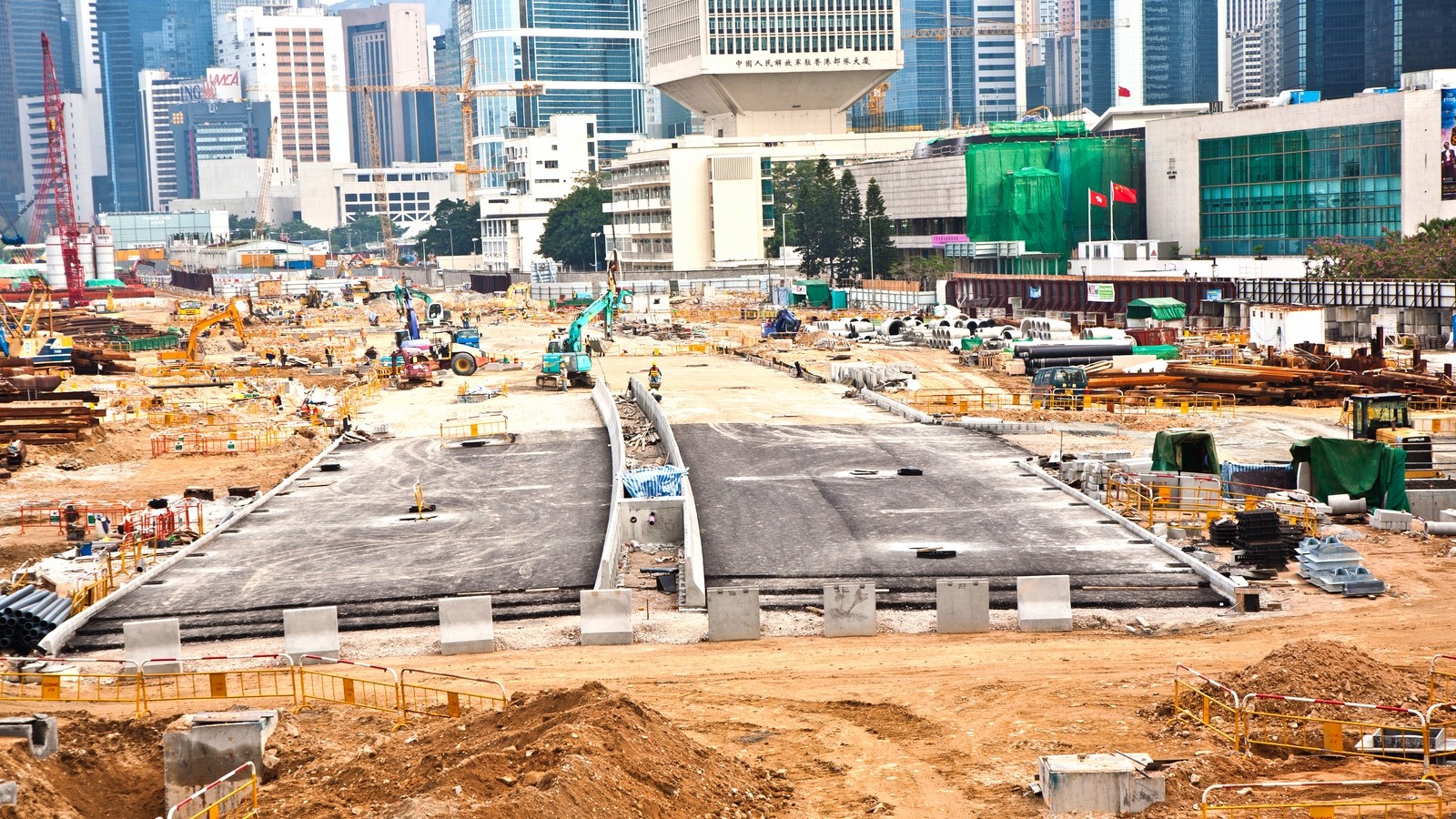
Following the American model of road construction, over the past decade and a half, the Chinese have built over 70,000 kilometers of freeways, and to date, the pace has approached the mark of 30,000 kilometers of freeways per year. The warranty for roads in China is 20-25 years.
Georgia
In the second part of the story, we turn to some countries former USSR. Their culture of road construction after the collapse of the Union was formed in different ways. In Georgia, for example, the roads have always been relatively good - partly due to the stable rocky ground.
AT last years a widespread restoration of old roads and the construction of new ones are being carried out: secondary rural roads are covered with asphalt, and intercity highways are made according to the American scheme - from concrete. Although they call it in the German manner - autobahns. Speed limit repeats Russian rules: on highways (autobahns) 110 km / h, on other country roads - 90 km / h.
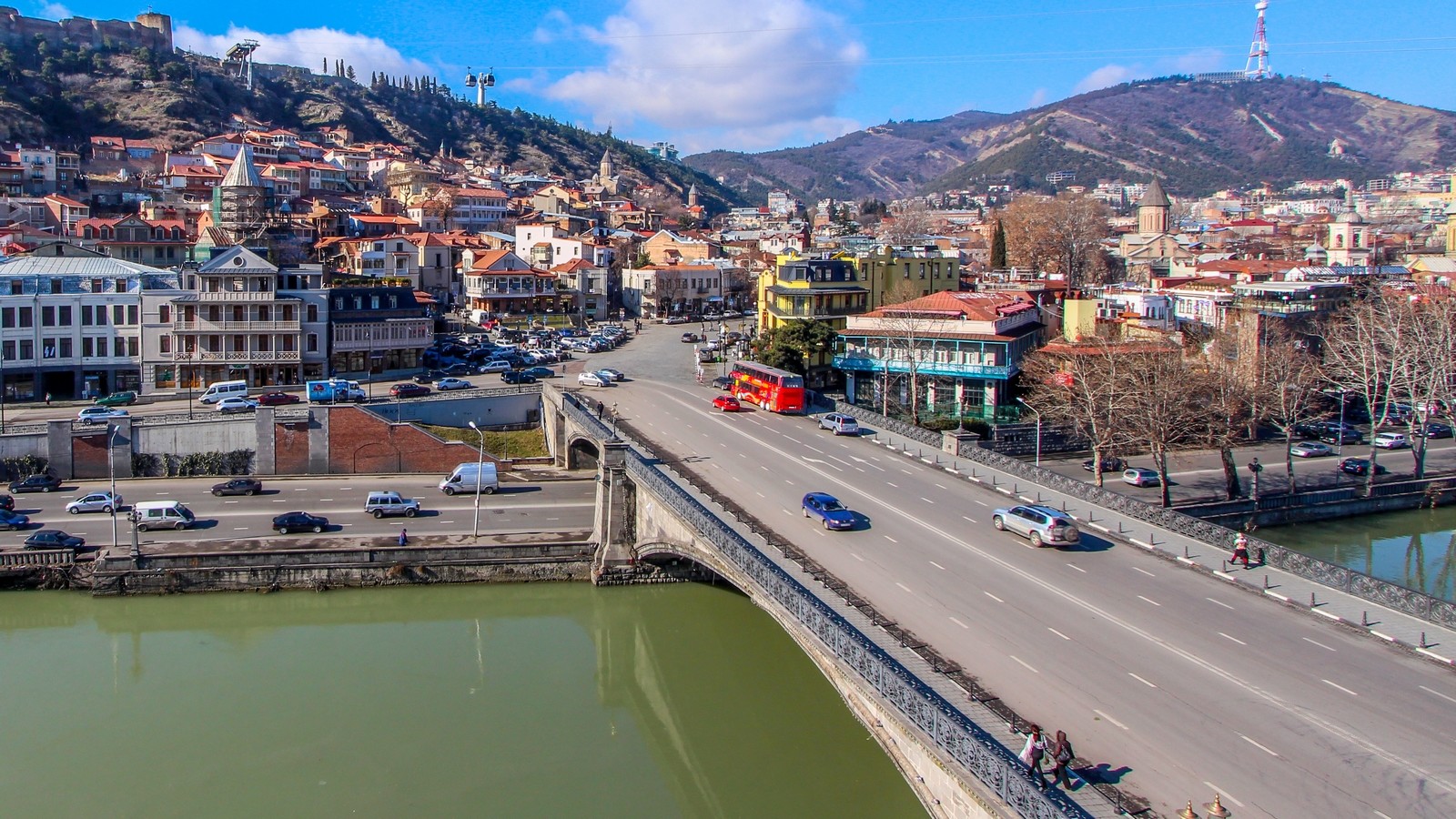
Since 2012, the Batumi-Tbilisi highway has been under construction in Georgia, and part of this expressway with lighting, cameras, light panels and recreation areas has already been put into operation. Ultimately, the path between the capital and Batumi (about 380 km) should be reduced to three hours. And not so long ago, another autobahn, 17.4 km long, built by the Chinese company Sinohydro Corporation Ltd, was put into operation on the Rustavi-Tbilisi section.
Latvia
Latvia found itself in a completely different situation. This country has always been a little more "Soviet" than neighboring Lithuania and Estonia, and in many ways - in particular, in terms of road construction - this did not serve well.
Until 2003, there was a special road fund in the country, which was supposed to accumulate funds for road construction, but neither its liquidation due to "non-transparency" nor its restoration in a new format, which is currently being discussed, give a clear answer to the question: why are the funds collected by the state taxes do not properly fall into the scope of road construction? What a familiar situation!
Since 2004, Latvia has been a member of the European Union, which allocates money to improve the quality of roads, but by 2018 most of these funds will be spent, and there has been no real progress. The worst situation has developed with local roads, for which it is forbidden to use European funds. Another painful (and also very familiar) issue is the quality of road repairs. It is natural that the cost of maintaining roads in Latvia is higher than that of its neighbors.
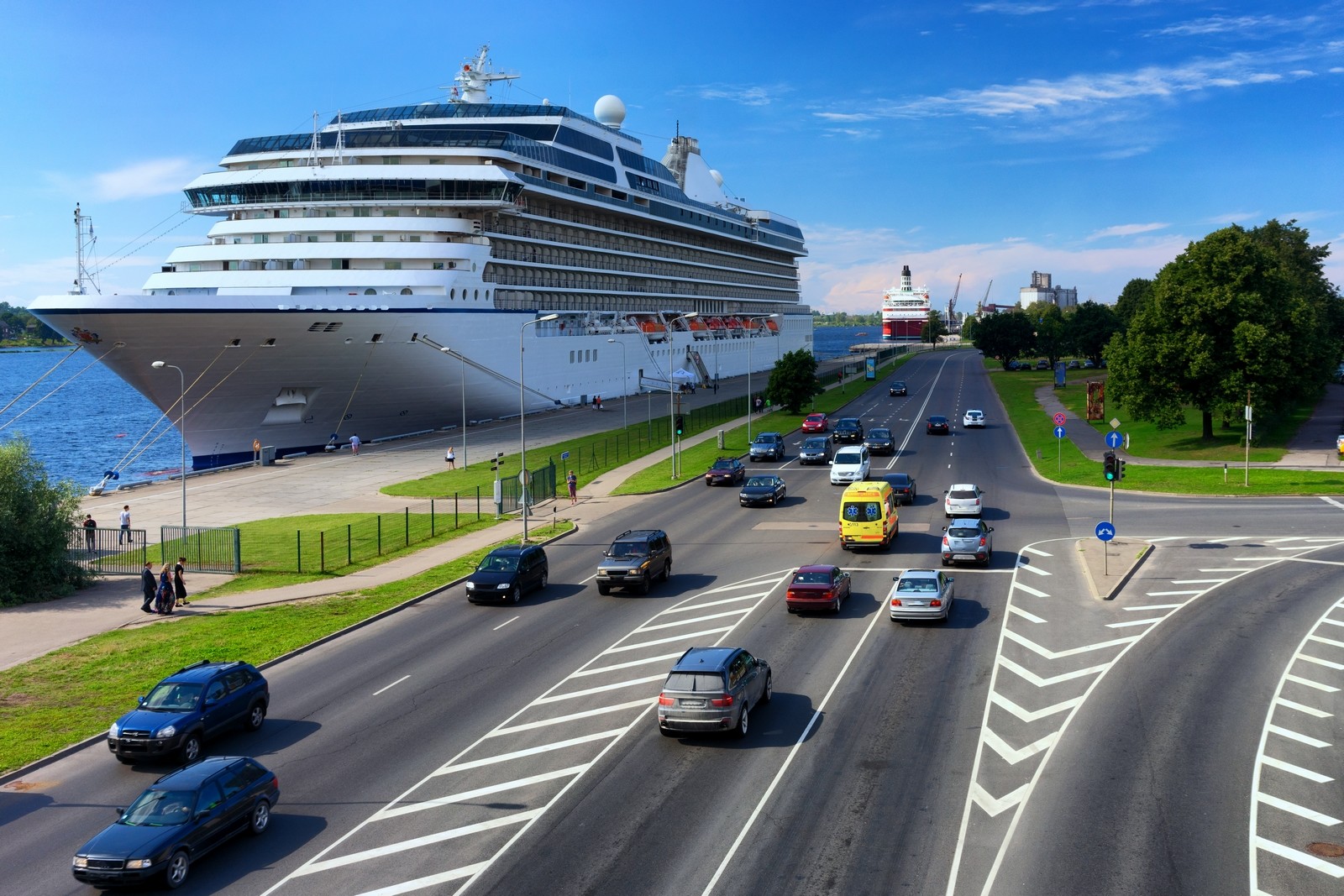
By 2015, out of more than 20,000 km of state roads in Latvia, only 9,000 km were paved, of which over 4,000 km were in poor or very poor condition, according to Neatkariga. In 2013, the World Economic Forum conducted a study of the quality of roads in the world, and among 144 participating countries, Latvia was in 99th place, next to Zambia and Zimbabwe. Estonia ranked 61st, Lithuania - 32nd.
Russia
In the 2013 ranking, the countries with the best roads were recognized (places from one to ten): France, UAE, Singapore, Portugal, Oman, Switzerland, Austria, Hong Kong, Finland and Germany. If we continue talking about the former union republics, then Belarus, with its good quality of asphalt and the traffic payment system adopted from the UAE country roads with the help of devices installed on cars and reading "frames" on the tracks, was not included in the rating. But Russia got into the rating and ended up in ... 136th place, next to Ukraine and Central African Gabon. Only East Timor, Guinea, Mongolia, Romania, Haiti and Moldova could “boast” with roads worse than in Russia.
In 2015, the alignment of the leaders changed slightly: the UAE came out on top, followed by Portugal, Austria, France and the Netherlands. Closed the list of 141 countries this time Guinea. The United States, from which we began the story, was only in 16th place, and as for Russia, it slightly improved its position, taking 124th place in the list of 141 countries. But, as we understand, such progress does not in any way attract a cause for national pride.
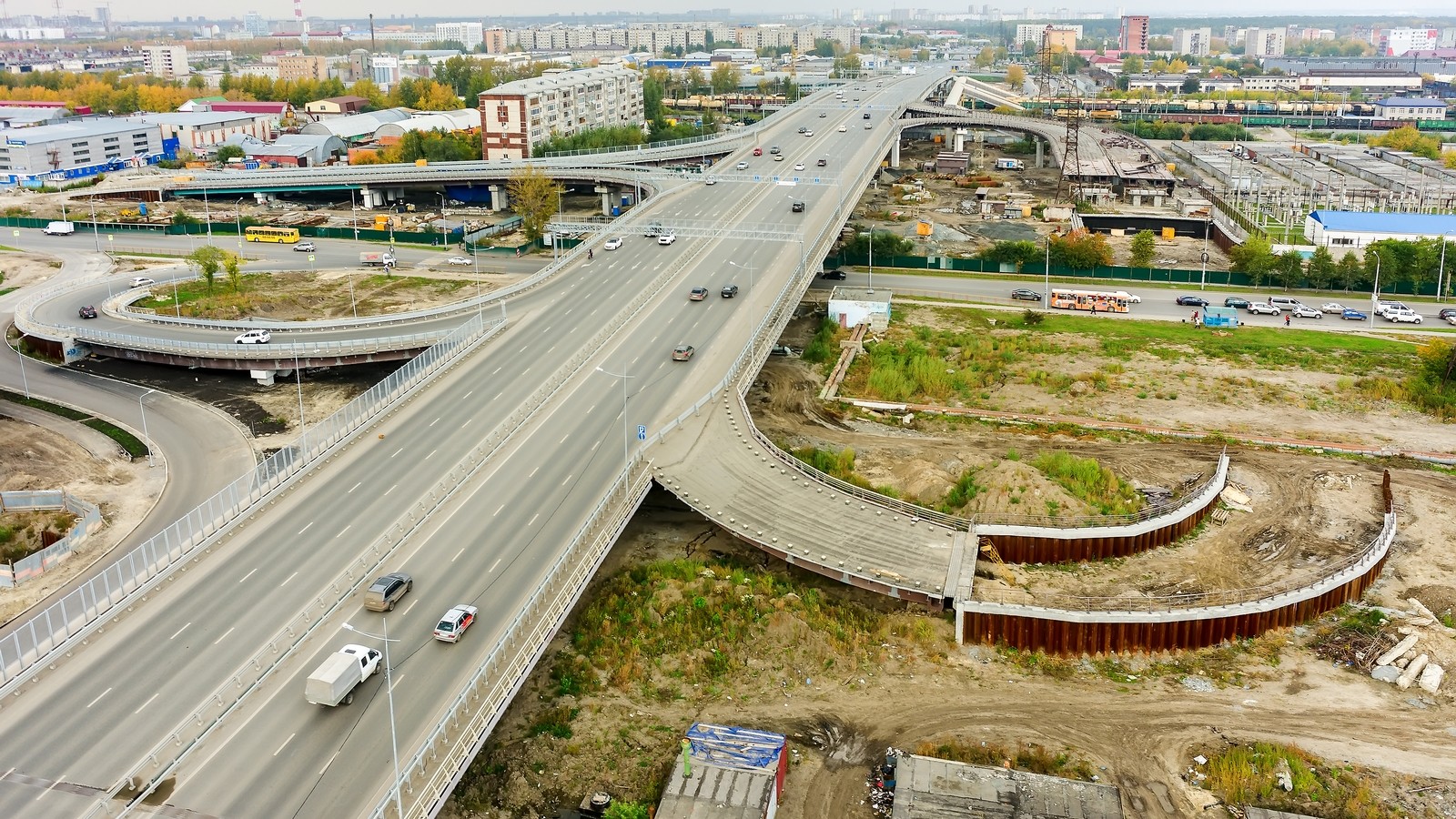
The United States has almost 6.5 million kilometers of roads, including highways, paved and unpaved roads. In Russia - six times less, about 1,400,000 km, and this despite the fact that the territory of Russia is almost twice the size of the United States. Moreover, Japan has almost the same number, 1,200,000 km, and the country's area is 45 times smaller than Russia's!
The length of North American highways (highways and freeways) is over 77,000 km, and in Russia there are barely a thousand kilometers of such. The highways of Finland have approximately the same mileage, which has almost ten times fewer roads than in Russia, not to mention the country's area.
And here is another “territorial” example: what if we compare, say, the roads of Russia and Great Britain and take into account only paved roads? There are 984,000 kilometers of such cars in Russia, according to Rosavtodor. And in the UK - about 344,000 kilometers, that is, about three times less. But this is at total area country is 70 times smaller than the area of Russia! And with a completely different quality of this very hard coating.
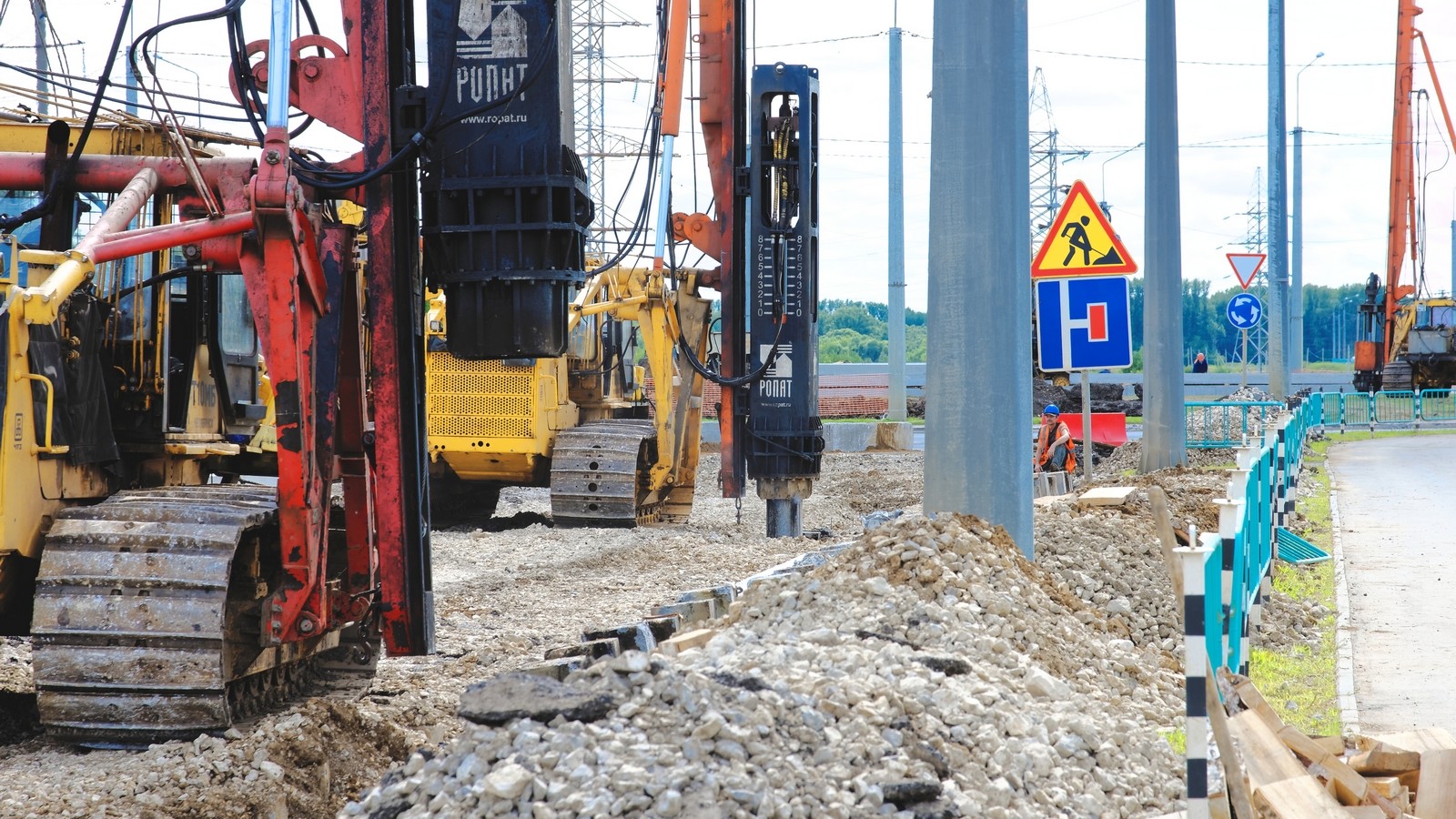
We can also recall the 70,000 kilometers of highways built in China over the past 15 years, and the fact that in Russia all federal highways are not highways, but simply "federal roads", where there are places that locals lovingly call "graviyechka" - only about 51,000 km.
The main binding material in the asphalt mix is bitumen, which is produced in oil refineries. According to some reports, the demand for high-quality bitumen in Russia is falling, and its production is declining catastrophically. The road business in the Russian Federation is arranged in such a way that it is unprofitable for a road construction company to buy high-quality bitumen - this negatively affects the volume of orders in the future.
It is better to buy a material similar to normal bitumen, which is essentially oil refining waste with an added binder and costs several times cheaper. This circumstance serves as an additional trump card when participating in a tender for road works, because the contractor who offers the lowest price wins. Asphalt obtained using this "bypass" technology has a shelf life of up to 1 year, after which it is destroyed, and the company has the opportunity to receive a new work order.
In 2011, the website of the RosYama project was launched in Russia, which allows users to file a complaint with the traffic police about a road defect that does not comply with GOST. If after 37 days the complaint is not given a move, the site generates an application to the prosecutor's office. Now the project has mobile app, and since 2015, the complaint is filled not by the user, but by the site team. At the time of writing, almost 86,000 holes have been added to the site, of which about 23,500 have already been fixed thanks to the efforts of users.
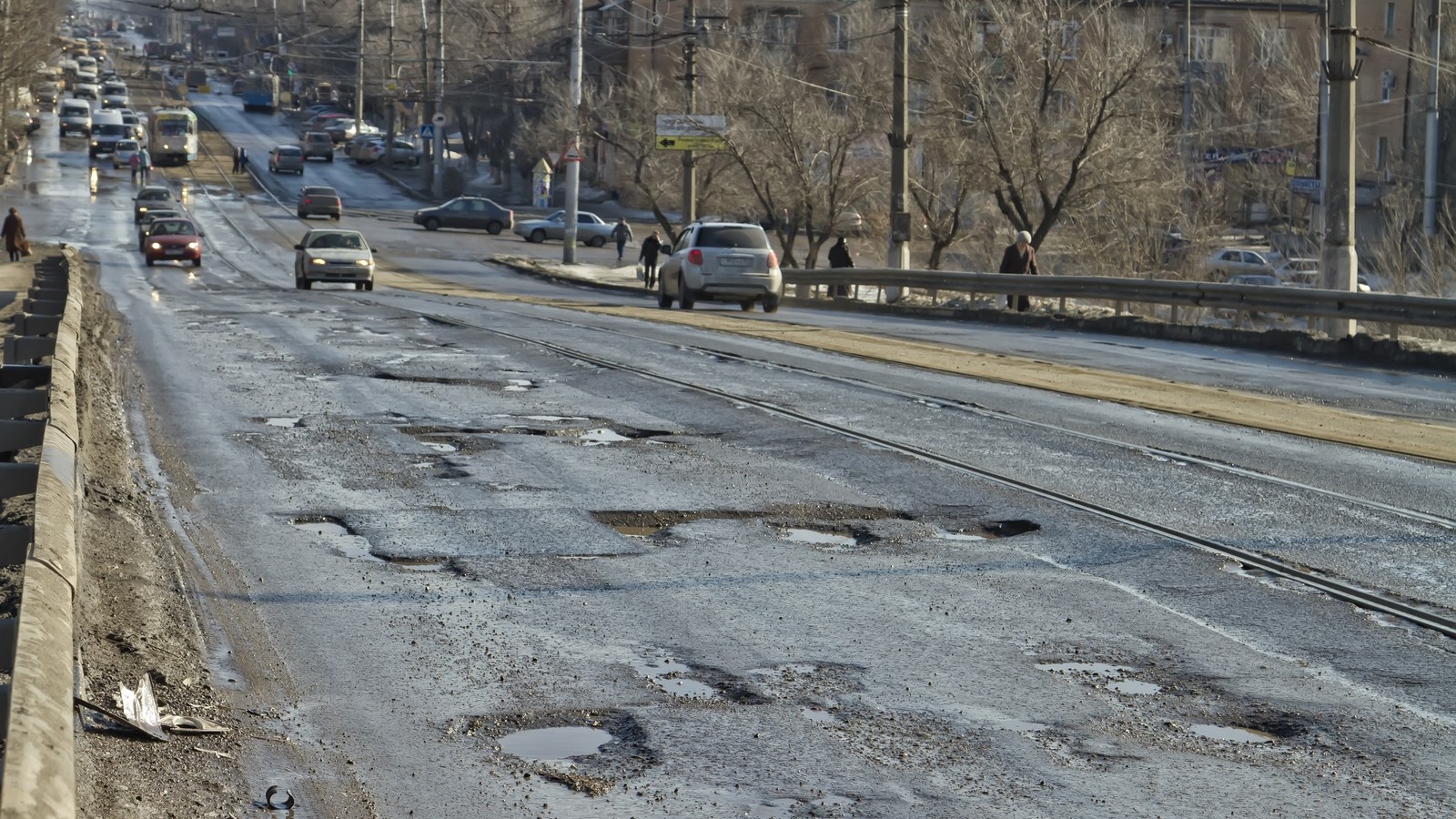
As for the fight against road defects not in the virtual, but in the real Russian space, in recent years it has turned into a kind of the new kind protest art: if at the end of the “zero” activists in different cities of Russia simply circled the road pits with bright paint, then a few years later they used them, for example, to create whole paintings depicting famous officials, and also planted plants in the potholes - bushes and small trees .
However, this is a completely different story. And today's story, dedicated to how the followers of John Loudon McAdam disposed of his legacy, is over.
History of roads in Russia
Introduction
1. Roads in Kievan Rus
Conclusion
Introduction
Anyone who thinks that roads appeared on our planet recently is very mistaken. There have always been roads, even when there was no man himself on Earth. Animals, for example, always ran to the watering hole along the relatively safe roads they had trampled, without the risk of falling into a deep hole or drowning in a swamp. But a man came. He was no longer satisfied with the spontaneously formed and narrow paths passing through forests and mountains. A person had to move not only on his own, but also to come up with something so that the carts he made would not get stuck in the mud during the autumn thaw. And the man began to build roads. At first it was just narrow and long strips paved with cobblestones or pieces of sandstone. But, over the centuries, roads have been improved, and today they are multi-lane structures with their own infrastructure, interchanges, bridges across water barriers, many kilometers of tunnels pierced in the mountains and lying under water. All of these are roads.
The history of road construction itself is like a long and winding road. In this paper, we will consider the history of one of its sections - the history of Russian roads.
1. Roads in Kievan Rus
Roads are one of the most important elements of the state's infrastructure. The degree of development of the road network directly affects the economic prosperity and defense capability of the country.
Unfortunately, throughout history, Russian roads have left much to be desired. To some extent, this is due to the peculiarity of the natural and geographical conditions in which Russian civilization was formed. In view of the harsh climate, the presence of a large number of various kinds of obstacles - forests, wetlands, the construction of roads in Russia has always been associated with significant difficulties. Unlike Western countries, which arose on the site of one of the greatest ancient civilizations - Ancient Rome and inherited from it, in addition to Roman law and architecture, an excellent road system, Russian civilization, being peripheral, arose on a rich but undeveloped territory, which also explains the peculiarities of its development. transport system.
The formation of the Old Russian state dates back to the end of the 9th century. In view of the fact that most of the territory of Russia was occupied by impenetrable forests, rivers played the role of roads; all Russian cities and most of the villages were located along the banks of the rivers. In the summer they swam along the rivers, in the winter they rode sledges. According to the testimony of the Byzantine emperor of the 10th century, Constantine Porphyrogenitus, even the collection of tribute by the Kyiv prince (poludie) was carried out in winter. In November, the prince with a retinue left Kyiv and traveled around the subject territories, returning in April. Apparently, in the rest of the year, many Russian territories were simply inaccessible. Overland communication was also hampered by gangs of robbers who hunted on forest roads. Kyiv Prince Vladimir Monomakh, who ruled at the beginning of the 12th century, in his "Instruction" addressed to his children, as one of his exploits, recalled the journey "through the Vyatichi" - through the land of the Vyatichi. The first mention of road works dates back to 1015. According to The Tale of Bygone Years, Prince Vladimir of Kyiv, about to go on a campaign against his son Yaroslav, who reigned in Novgorod, ordered his servants: Fumbling paths and bridges bridge". In the 11th century, the authorities tried to legislate the status of "bridgemen" - masters in the construction and repair of bridges and pavements. The first written set of laws in Russia, Russkaya Pravda, contains a Lesson for Bridgemen, which, among other things, set tariffs for various road works.
The absence of roads sometimes turned out to be a boon for the population of the Russian principalities. So, in 1238, Batu Khan, who ruined the Ryazan and Vladimir-Suzdal principalities, could not reach Novgorod due to the spring thaw, and was forced to turn south. The Tatar-Mongol invasion played a dual role in the development of the road system of the Russian lands. On the one hand, as a result of Batu’s campaigns, the economy of the Russian principalities was thoroughly undermined, dozens of cities were destroyed, a significant part of the population died or was taken prisoner, which ultimately led to a reduction in trade and desolation of roads. At the same time, having subjugated North-Eastern Russia and made it an ulus (part) of the Golden Horde, the Tatars introduced their postal system in the Russian lands, borrowed from China, which in fact was a revolution in the development of the road network. Horde mail stations began to be located along the roads, called pits (from the Mongolian "dzyam" - "road"). The owners of the stations were called coachmen (from the Turkic "yamdzhi" - "messenger"). The maintenance of the pits fell on the local population, who also performed the underwater duty, i.e. was obliged to provide their horses and carts to the Horde ambassadors or messengers. Horde officials traveling along Russian roads were issued a special pass - a paysatz.
2. Territorial growth of Russia and development of roads
XIV-XV centuries in the history of Russia - the time of the formation of a single centralized state. The Moscow Principality unites the lands of North-Eastern Russia around itself; at the end of the 15th century, a new name for a single state appeared - “Russia”. The growth of the territory of Russia continued in the XVI-XVII centuries. By the end of the 16th century, the Volga, Urals, and Western Siberia were included in Russia. In connection with the growth of the territory, roads in Russia have acquired special importance; on them, messengers from all the outskirts of the state delivered to Moscow news of the invasions of foreign troops, rebellions and crop failures. The central government showed particular concern for the development of the Yamskaya post, inherited from the Tatars. In the 16th century, yamskaya chase was established in the Ryazan and Smolensk lands. By the time of the reign of Ivan III, the first surviving travel document issued to Yuri Grek and Kulka Oksentiev, who was sent "to the Germans", dates back. In it, the sovereign ordered at all distances from Moscow to Tver, from Tver to Torzhok and from Torzhok to Novgorod to give to ambassadors " two carts to a cart from the pit to pit according to this my letter". In another letter of Ivan III - dated June 6, 1481 - the position of an official responsible for the condition of postal stations and roads - a Yamsk bailiff, was first mentioned. The pits were located at a distance of 30-50 miles. Coachmen were obliged to provide horses for all travelers with a princely letter, for their service they were exempted from tax - the sovereign tax and all duties - and, moreover, received maintenance in money and oats. Local peasants had to keep the roads in good condition under the supervision of coachmen. At the choice of the headman, two people from the plow (a territorial unit of tax payment) went out to clear roads, repair bridges and renew the gates through the swampy sections of the road. Under Ivan the Terrible, in 1555, a single body for managing the road business was created - the Yamskaya hut. Already at the beginning of the 16th century, the first descriptions of large Russian roads appeared - “Russian road builder”, “Perm” and “Yugorsky” road builders. By the end of the 16th century, “exiled books” appeared with descriptions of small regional roads.
3. Large road construction projects of the 18th–19th centuries.
In the Petrine era, road supervision passed to the Chamber Collegium, the central tax department, which also collected road tolls. In the localities, in the provinces and provinces, the roads were entrusted to zemstvo commissars, who were elected by local landowners and subordinate to the Chamber Collegium. The largest road construction project of the time of Peter the Great was undoubtedly the construction of a "prospective" - straight-line road from St. Petersburg to Moscow. Work on the construction of the "prospective" road continued until 1746. The road work was in charge of the Office of the State Road Construction, headed by General V.V. Fermor.
Catherine II, already at the beginning of her reign, decided to give the road business the character of an important state task. It strengthened the status of the Chancellery from the construction of state roads as a central institution. The decree of February 18, 1764 commanded her " make every effort to bring all state roads to the best condition". In 1775, a provincial reform was carried out. Most of the central departments, including the Office for the Construction of State Roads, are gradually being liquidated, their powers are being transferred to provinces and counties. The authorities of the province were supposed to deal only with the completion of state roads, and their maintenance was transferred to the county authorities - the zemstvo police officer and the lower zemstvo court. They were ordered " to apply vigilant care and care so that roads, bridges and crossings ... are kept in such good condition that there is no stop or danger to the passerby", to " no one dug up bridges and roads, blocked and shifted from one place to another ... and so that everywhere on the roads and bridges there was cleanliness, and dead cattle and carrion, from which a harmful spirit emanates ... nowhere was lying».
During the XVIII-XIX centuries, the road departments were subjected to constant reorganization. In 1809, Alexander I approved the Institution for the management of water and land communications. According to him, the Expedition of Water Communications and the Expedition for the Construction of Roads in the State merged into the Directorate of Water and Land Communications (since 1810 - the Main Directorate of Communications - GUPS), which was entrusted with all communications of national importance. The department was located in Tver, headed by the chief director and the council. Under the chief director there was an expedition, which included three categories (departments), of which the second was engaged in overland roads. The empire was divided into 10 districts of communications. At the head of the district was the district chief, who was subordinate to the managing directors who supervised the most important parts of the lines of communication and were especially busy drafting projects and estimates. The security of the roads has also been improved. It was entrusted to special district police teams, which were subordinate to the district chiefs. The teams consisted of the chief of police, caretakers, non-commissioned officers and privates. Their task was not to fight criminality, but to ensure that "roads, bridges, ditches, etc. were not damaged, that the side channels were not blocked, that the roads themselves were not narrowed by buildings, wattle fences or plowed."
In the second half of the 19th century, the importance of unpaved and highway roads in Russia decreased significantly due to the development of railway transport. If in 1840–1860 up to 266 miles of highways were put into operation annually, then in the 60s it was 2.5 times less. So, in 1860-1867, an average of 105 miles per year was built. In the years 1867-1876, the construction of roads was practically not carried out, and from 1876 to 1883 no more than 15 versts of the highway were put into operation annually. In addition, the quality and condition of these roads left much to be desired. The situation changed somewhat after the Zemstvo reform in 1864. The roads were transferred to the jurisdiction of the zemstvos, which were supposed to monitor their serviceability. Lacking the large funds necessary for carrying out large-scale road works, the zemstvos launched a vigorous activity to improve roads. Green spaces are being created along the roads, road equipment is being purchased abroad.
4. Russian roads in the twentieth century
The rapid development of the country's industry at the turn of the 19th-20th centuries, as well as the appearance of the first cars on Russian roads, contributed to a change in the attitude of the government to the state of the road network. Before the First World War, motor races were organized almost every year, local authorities tried to improve the roads before these events. Many dignitaries, generals, senior officials contributed to the allocation of financial and material resources for the construction of roads, as well as the solution of various organizational problems. The measures taken at the beginning of the 20th century by the government, zemstvos, commercial, industrial and financial circles made it possible to slightly increase the length of the road network, improve their condition, and introduce some technological innovations.
The revolutions of 1917 and the civil war of 1918-1920 had a huge impact on the development of the country's road network. During the Civil War, road construction was carried out by Voenstroy, Frontstroy, and the Highway Administration (Upshoss) of the NKPS. After the end of the civil war, countless reorganizations of these departments began. At the beginning of 1922, Upshoss and the Central Automobile Section of the Supreme Economic Council were merged and included in the Central Administration of Local Transport (TSUMT) as part of the NKPS. However, already in August 1922, by a joint decree of the All-Russian Central Executive Committee and the Council of People's Commissars of the RSFSR, the country's road infrastructure was divided between two departments - the TSUMT NKPS and the Main Directorate of Communal Services (GUKH) of the NKVD. The roads of national importance were under the jurisdiction of TSUMT, the direct concern for the condition of the roads was entrusted to the district departments of local transport (OMES) subordinate to TSUMT. Departments of communal services GUKH NKVD carried out the management of local roads.
The reforms of the road management authorities continued in subsequent years. At the same time, the state of the road remained in a deplorable state. The problem of financing road construction was particularly acute. At the same time, the country that carried out industrialization needed to create a developed transport system as soon as possible. The Soviet leadership tried to get out of this situation by transferring control of the roads of allied significance to the NKVD. In 1936, as part of the NKVD of the USSR, the Main Directorate of Highways (Gushosdor) was formed, which was in charge of roads of allied significance. As early as 1925, a natural road service was introduced in the country, according to which local residents were obliged to work for free a certain number of days a year on road construction. In 1936, a government decree was issued, which recognized the expediency of creating permanent local brigades, the work of which was included in the general plan for the labor participation of collective farmers. However, the main labor force in the construction of roads were prisoners. As a result of the second five-year plan (1933-1937), the country received more than 230 thousand kilometers of profiled dirt roads. At the same time, the plan for the construction of paved roads turned out to be underfulfilled by 15%.
A large road construction program was planned for the third five-year plan (1938–1942), but the Great Patriotic War prevented its implementation. During the war years, a significant part of the road equipment was transferred to the Red Army, many road workers went to the front. During the hostilities, 91,000 kilometers of roads, 90,000 bridges with a total length of 980 kilometers were destroyed, therefore, after the end of the war, the primary task facing the road services was the repair and restoration of roads. However, the fourth five-year plan, adopted in March 1946, poorly took into account the interests of the road industry, which was financed on a residual basis. At that time, two departments were responsible for the construction of roads - Gushosdor of the Ministry of Internal Affairs and the Main Road Administration (Glavdorupr). As part of Gushosdor, in 1945, a Special Road Construction Corps was created, the basis of which was road troops.
In the 50s, Gushosdor was transferred to the structure of the newly created Ministry of Automobile Transport and Highways of the USSR, where it was divided into two main departments - operational (Gushosdor) and construction (Glavdorstroy). All work on the construction of national roads, which was previously carried out by Gushosdor, was transferred to Glavdorstroy. Problems with the financing of the road industry were felt in these years as well. As before, attempts were made to involve the local population and the equipment of various enterprises in the road works. In 1950, Glavdorupr was simultaneously building 32 roads of republican significance and a number of local roads. The dispersal of resources and the multi-objective nature of tasks, with poor material and staffing, had a negative impact on the results of the work.
rosavtodor/doc/history/main15.jpg The peak of road construction in the USSR falls on the 60-70s. Significant funds are being allocated for road construction, and road builders are getting modern equipment. In 1962, the Moscow Ring Road was put into operation, with a length of 109 kilometers. In general, in the Russian Federation in 1959–1965, the length of paved roads increased by 81.2 thousand kilometers, 37 thousand kilometers of them had improved pavements. In the same years, the roads Kashira-Voronezh, Voronezh-Saratov, Voronezh-Shakhty, Saratov-Balashov, Vladimir-Ivanovo, Sverdlovsk-Chelyabinsk, and a number of others were built.
Intensive road construction continued in the 1970s and 1980s. As a result, in 1990 the network of public roads in the RSFSR amounted to 455.4 thousand kilometers, including 41 thousand kilometers of national roads and 57.6 thousand kilometers of republican significance.
However, in the early 1990s, about 167 district centers (out of 1,837) were still not connected to regional and republican centers by paved roads. The residents of almost 1,700 central estates (out of 23,000) and about 250,000 medium and small settlements and farms did not have access to the main highway network on paved roads. Due to the difficult economic situation in the country, there was a big shortage of financial resources. At the same time, the transition to a market economy required a revision and fundamental change in the essence of many socio-economic categories, such as the form of ownership, planning, management of industrial relations, the psychology of the individual and society, and many other components of human existence.
Despite all the difficulties, for 1997-1999. there have been real shifts both in the development of the road network and in the efficiency of the functioning of the road sector. Over the past 12-13 years, Russia has seen an accelerated (up to 10% per year) growth in the car park, traffic intensity and road transport.
As of January 1, 2002, the length of motor roads in the Russian Federation was 904.7 thousand km, including 759.3 thousand km of paved roads and 145.4 thousand km of unpaved roads. The length of public roads is 588.7 thousand km, including 537.3 thousand km of paved roads (91%), unpaved roads - 51.4 thousand km. At the same time, the length of federal public roads is 46.6 thousand km, including 46.3 thousand km (99.3%) with a hard surface, and 542.1 thousand km of territorial public roads, including including paved 491 thousand km (90%).
Yes, our roads are still inferior to European ones, and in general we do not have enough of them. Experts have calculated that in order to fully meet the socio-economic needs of the country, the minimum length of the Russian road network should be at least 1.5 million km, that is, increase one and a half times compared to what we already have.
Of course, this will require a significant increase in the volume of road construction. Here it is appropriate to quote the statement of Sergei Frank, Minister of Transport of the Russian Federation. He announced that the national program for the development of the road network envisages an increase in the total length of Russian roads by 2010 by 80,000 km. This task is supposed to be carried out with the involvement of private investors, who will have the opportunity to create a network of toll roads in our country.
However, those who are frightened by the very phrase "toll roads" can be reassured. Commercial highways will only be an alternative to the conventional road network. The appearance of toll roads will not change the quality of functioning of existing roads, and first of all, federal highways. The driver himself will decide whether to drive straight as an arrow and ideally flat road, for which you will have to pay, or use the free one, the quality of which has become familiar to us. This practice has long been accepted in many countries of the world. And, in my opinion, this is quite fair, as long as there are no excesses.
Conclusion
The road builders do not stop there and direct their main efforts to expanding not only the domestic, but also the international space. This is reflected in the federal target program “Modernization of the transport system of Russia (2002-2010)”, which is being implemented today, namely in the part “Roads” (the program “Roads of Russia in the 21st century”), which is based on the principle of developing international and Russian transport corridors : Baltic-Center-South, Western border-Center-Ural, North-South, North-West-Ural, Western Siberia-Far East and others. They play a central role in solving transport problems related to the expansion of international, interstate and interregional transport, economic, political, and cultural ties.
Currently, with the support of the Government of the Russian Federation, active work is underway on a long-term program for the development of the national network of Russian highways until 2025. New tasks are set, the main directions are determined, priorities are identified with one goal - to make Russia a country of developed motorization and excellent roads. Let's hope that this most difficult task will be completed not only in the central part, but also in the northern part of Russia, in the Far East and in Siberia.
List of used literature
Roads of Moscow [Electronic resource]: about-roads/auto/moscow-roads/
Roads of Russia: trouble or victory [Electronic resource]: about-roads/auto/autoroad-rus/2/
Roads of Russia: history and modernity [Electronic resource]: rosavtodor/doc/history/hystory1.htm
The history of roads in Russia and the world [Electronic resource]: about-roads/auto/road-history/
Similar abstracts:
Choice of methods of organization of road construction works. General information about the flow method of organizing road construction works. Construction of schedules for the organization of road construction works by the in-line method. The main parameters of road construction flows.
Crossing of the road in one level, development of a longitudinal profile at the approaches to the intersection for roads in two levels. Calculation of runoff from a small catchment area for a culvert. Acquisition of land for a section of the road with a length of 2 kilometers.
Activities for the development of territories, including cities and other settlements. general characteristics district. Urban planning analysis of the area in terms of provision with social and cultural facilities (shops, savings banks, repair shops, sports facilities).
Real estate analysis of St. Petersburg. Marketing researches of the market. Characteristics of the Moskovsky district of St. Petersburg. Price indicator in the housing market of the Moskovsky district of St. Petersburg. Evaluation of the effectiveness of investments in the construction of facilities.
The history of the development of the use of geosynthetic materials in road construction in the Russian Federation. Production various kinds geotextiles and geogrids, geogrids and geocells, geofilaments, as well as geoplates used as thermal insulators.
Analysis of the status of an architect. Anthropomorphic dimension in architecture. Linear communication space. Three-dimensional space of reproduction of life and culture. Moscow urban planning. Manifestation natural factors in architecture (sun).
Natural and climatic conditions for the design of a highway. Calculation technical standards highway. Route plan design. Calculation of an incorrect picket. Designing a longitudinal profile of a highway. Turnback project.
Architecture of the northern cities of Russia
The architecture of the North as part of the all-Russian culture. Russian wooden architecture: cult wooden structures and civil engineering. Monuments of stone construction, fortifications of the Russian North, monuments of carving and sculpture.
The issues of designing the main elements of the Zavitinsk-Poyarkovo road are considered. Transport - economic characteristics. Technical standards for design. Description of the proposed option. Design of route plans. Cross profile calculation
Analysis of natural-climatic, soil and hydrological conditions of the road construction area. Determining the timing and scope of work. Technology and organization of pavement construction. Quality control, labor and environmental protection.
The crisis of the economic situation of industry building materials in Russia. Significance and effectiveness of the reorganization of production at the enterprises of the building materials industry. General characteristics and structure of the building complex of Ukraine.
The study of the features of urban planning in the city of Yuzhno-Sakhalinsk, which was influenced by different cultures, especially such dissimilar ones as European and Asian. The settlement of Sakhalin, the formation of the first settlements. Toyohara, the capital of the Japanese province of Karafuto.
The state of the road network and highways today. Characteristics of the branch program "Roads of Belarus". Improving methods for designing and building roads and bridges. Improving road safety.
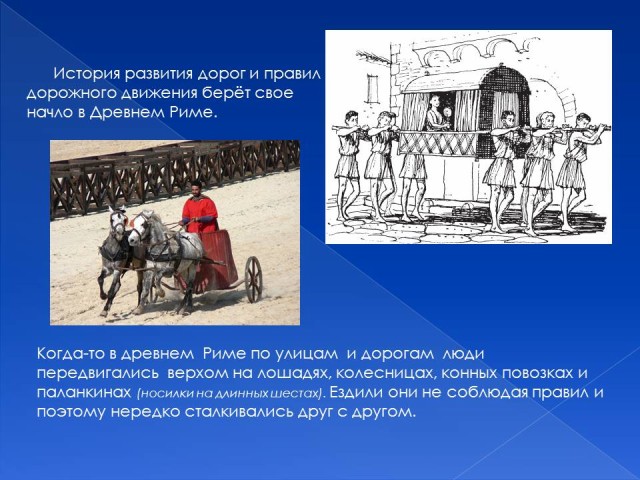

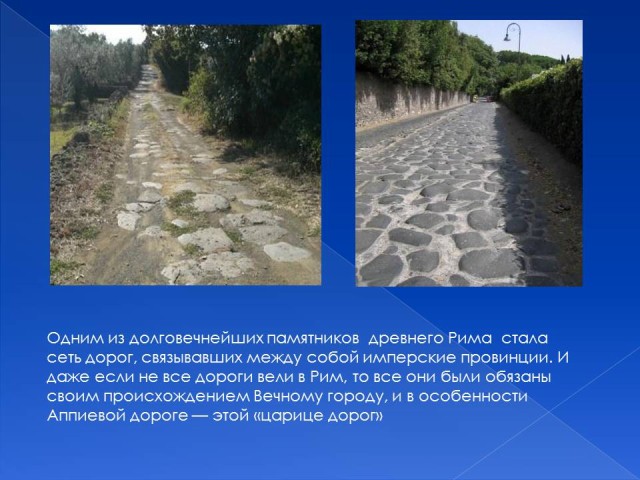
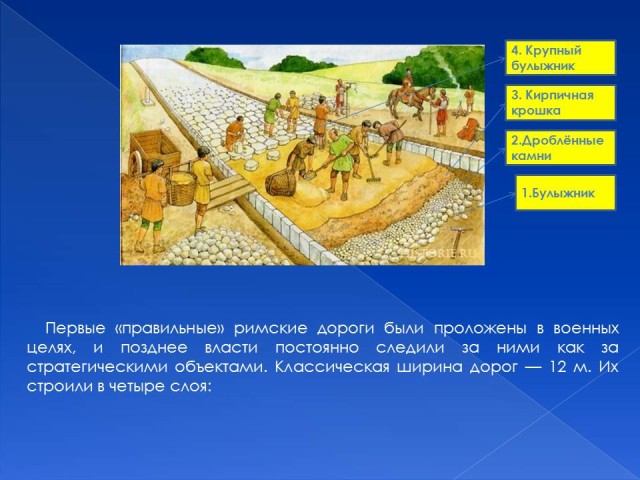

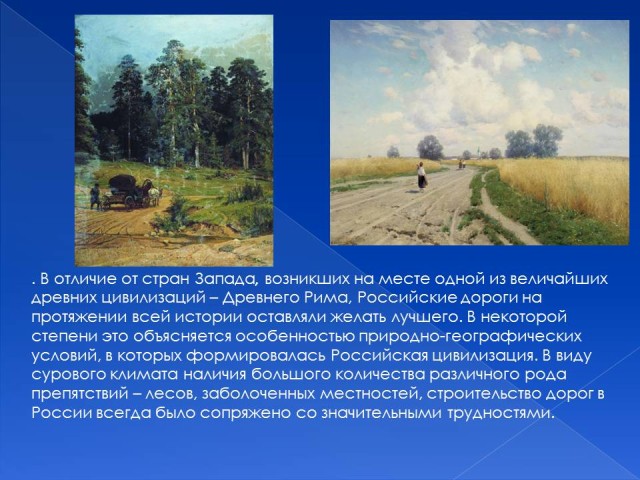

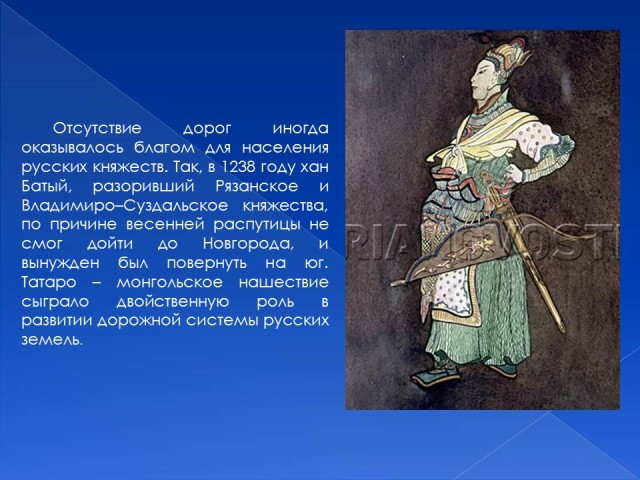

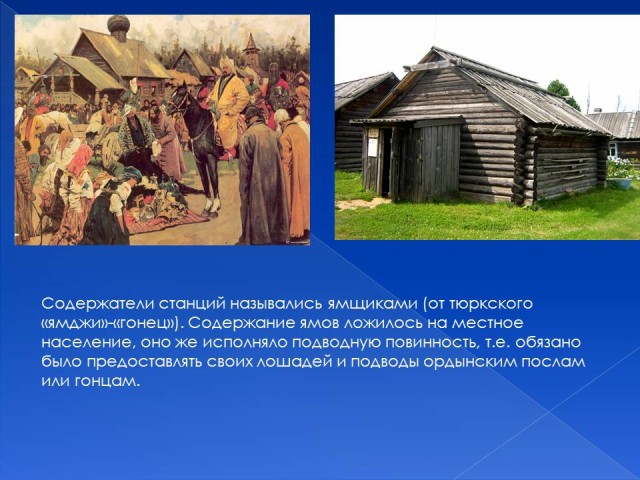

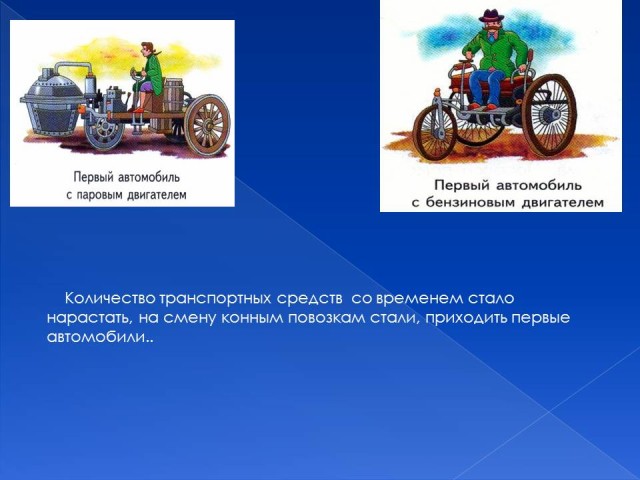
![]()

 Back forward
Back forward
Attention! The slide preview is for informational purposes only and may not represent the full extent of the presentation. If you are interested this work please download the full version.
Target:
- To introduce students to the history of the development of roads and the rules of the road.
- draw students' attention to the study and observance of traffic rules.
Visual aids: albums, drawings, on the topic.
“History of road development and traffic rules”
1. The teacher's story about the road.
It was a very long time ago. People lived then among the impenetrable forests. They raised cattle, hunted, collected honey from wild bees, fished, and sowed small plots of land. It was difficult then for people to make their way through dense forests, but there was a need for this. And so people began to cut paths in the forests. They were called "paths". "Putiks" connected settlements with each other, they began to be called roads. The road is the way from one locality to another.
Teacher:
2. As time went on, riders on horseback, chariots and horse-drawn carts began to ride along the streets and roads. They can be considered the first vehicles. They traveled without observing any rules, and therefore often collided with each other. After all, the streets of cities in those days were usually narrow, and the roads were winding and bumpy. It became clear that it was necessary to streamline the movement along the streets and roads, that is, to invent rules that would make movement on them convenient and safe.
The history of the development of roads and the first rules of the road originates in ancient Rome.
3. The first rules of the road appeared more than 2000 years ago, under Julius Caesar.
Julius Caesar introduced one-way traffic on several streets in the city in the 50s BC. From sunrise and about two hours before sunset (working day end time) the passage of private wagons and chariots was forbidden.
Visitors to the city had to travel in Rome on foot or on a palanquin (stretcher on long poles), and transport to park outside the city.
Already at that time there was a supervisory service that monitored compliance with these rules. It consisted mainly of former firefighters
The duties of this service included preventing conflict situations among vehicle owners. Crossroads were not regulated. The nobles, in order to ensure free passage for themselves, sent forward runners. They freed the streets and the nobles thus could freely pass to their destination.
4. One of the most enduring monuments of ancient Rome was the network of roads that linked the imperial provinces. And even if not all roads led to Rome, they all owed their origin to the Eternal City, and in particular the Appian Way - this “queen of roads”.
5. The first "correct" Roman roads were built by the military and laid for military purposes, later the authorities constantly monitored them as strategic objects. The classical width of the roads is 12 m. They were built in four layers: cobblestone, crushed stones, brick chips, and large cobblestone.
One of the mandatory conditions set before the start of construction was the continuous accessibility of the road in any weather. For this, the roadbed not only rose 40-50 cm above the terrain, but also had a sloping shape in section, which is why there were never puddles on it. Drainage ditches on either side of the roadway diverted water away from it, giving it no chance to begin to erode the foundation.
One of the striking features of Roman roads has gone down in history - their straightness. For the sake of preserving this characteristic, convenience was often sacrificed: the road could turn to the side only because of a very serious obstacle, otherwise a bridge was built across the river, a tunnel was dug in the mountain, and gentle hills were not considered a problem at all, which is why travelers often had to climb steep ascents and descents.
6. A huge road network required appropriate infrastructure: inns, forges, stables - all this was built as the roadbed was built, so that by the end of the work the new direction would immediately become active.
7. Unlike Western countries , that arose on the site of one of the greatest ancient civilizations - Ancient Rome, Russian roads throughout history left much to be desired. To some extent, this is due to the peculiarity of the natural and geographical conditions in which Russian civilization was formed. In view of the harsh climate, the presence of a large number of various kinds of obstacles - forests, wetlands, the construction of roads in Russia has always been associated with significant difficulties.
8. In view of the fact that most of the territory of Russia was occupied by impenetrable forests, rivers played the role of roads; all Russian cities and most of the villages were located along the banks of the rivers. In the summer they swam along the rivers, in the winter they rode sledges. Overland communication was also hampered by gangs of robbers who hunted on forest roads.
9. The absence of roads sometimes turned out to be a boon for the population of the Russian principalities. So, in 1238, Batu Khan, who ruined the Ryazan and Vladimir-Suzdal principalities, could not reach Novgorod due to the spring thaw, and was forced to turn south. The Tatar-Mongol invasion played a dual role in the development of the road system of the Russian lands.
10. On the one hand, as a result of Batu's campaigns, the economy of the Russian principalities was thoroughly undermined, dozens of cities were destroyed, which ultimately led to a reduction in trade and desolation of roads. At the same time, having subdued North-Eastern Russia and made it part of the Golden Horde, the Tatars introduced their postal system in the Russian lands, borrowed from China, which in essence was a revolution in the development of the road network. Horde mail stations began to be located along the roads.
11. The owners of the stations were called coachmen (from the Turkic “yamji” - “messenger”). The maintenance of the pits fell on the local population, who also performed the underwater duty, i.e. was obliged to provide their horses and carts to the Horde ambassadors or messengers.
12. For a long time in Russia, traffic was regulated by royal decrees. So, in the decree of Empress Anna Ioannovna of 1730, it was said: “For cab drivers and other people of all ranks, ride with horses in harness, with all fear and caution, quietly. And in the decree of Empress Catherine II it is said: “On the streets, the coachmen should never shout, whistle, ring or strum.”
13. At the end of the 18th century, the first “self-propelled carts” appeared - cars. They drove very slowly and caused many criticism and ridicule. For example, in England they introduced a rule according to which a person with a red flag or lantern had to go in front of each car and
warn oncoming carriages and riders. And the speed of movement should not exceed 3 kilometers per hour; in addition, drivers were prohibited from giving warning signals. These were the rules: don't whistle, don't breathe, and crawl like a turtle.
But, in spite of everything, there were more and more cars.
Over time, changes and additions were made to the rules, features were specified when driving through intersections, changing the speed limit when approaching an intersection, and prohibiting overtaking in difficult sections. One of the additions was a rule giving priority to pedestrians in traffic. The religious procession or, for example, a funeral ceremony also enjoyed an advantage in movement.
14. The basis of the modern Rules of the Road was laid on December 10, 1868 in London. On this day, in front of the Parliament on the square, the first railway semaphore appeared in the form of a colored disc with mechanical control. This semaphore was invented by J.P. Knight, a semaphore specialist of the time.
The device consisted of two semaphore wings, and depending on the position of the wings, the corresponding signal was indicated:
Horizontal position - no movement
45-degree angle position - movement is allowed, but with precautions.
15. At first, different countries had different rules. But it was very inconvenient.
Therefore, in 1909, at the International Conference in Paris, the Convention on Automobile Traffic was adopted, which established uniform rules for all countries. This Convention introduced the first road signs established the duties of drivers and pedestrians.
16. Over the years, changes and additions have been made to the rules of the road, stipulating features when driving through intersections, changing the speed limit when approaching an intersection, and prohibiting overtaking in difficult sections.
The first traffic rules in Russia along the streets and roads were developed in 1940, since the development of road transport was slower than in Europe and America.
At present, modern traffic rules are in force in Russia, which we study in the classroom and extracurricular activities.
AT modern rules road traffic, the duties of drivers, pedestrians, passengers are set out, descriptions of road signs, traffic lights, etc. are given.
The teacher focuses on the fact that in all countries of the world children try never to violate the rules of the road, because the correct behavior on the streets and roads is an indicator of human culture.
On the streets of many cities, on busy highways, the movement of vehicles often takes the form of continuous streams. There is a concentration of the population in cities; now more than half of the country's population lives in cities. And this increases the number of pedestrians on the streets. The concentration of a large number of vehicles and pedestrians on the streets of settlements complicates the situation, requires the organization of traffic, ensuring the safety of traffic participants. With an increase in traffic intensity, a clear organization of the management of both transport and pedestrian flows, the use of modern means of regulation are required. In addition, to ensure traffic safety, drivers and pedestrians must have a solid knowledge of the “Rules of the Road”, as well as their exact implementation.
All citizens of our country are obliged to be guided by these rules, to comply with the requirements of police officers and those on duty at railway crossings. Any, even a minor violation of traffic rules in a traffic stream can cause a traffic accident, which will result in injury to people, failure of expensive vehicles and damage to the transported cargo.
Test questions.
1. Where did the first rules of the road appear?
2. How were the first Roman roads built?
3. Why have Russian roads left much to be desired throughout history?
4. How it was regulated road traffic in tsarist times?
5. In which city was the foundation of modern traffic rules laid?
6. In which city in 1909 at the International Conference was adopted
7. Convention on road traffic?
8. In what year were the first traffic rules developed in Russia?
9. What are traffic rules for?





